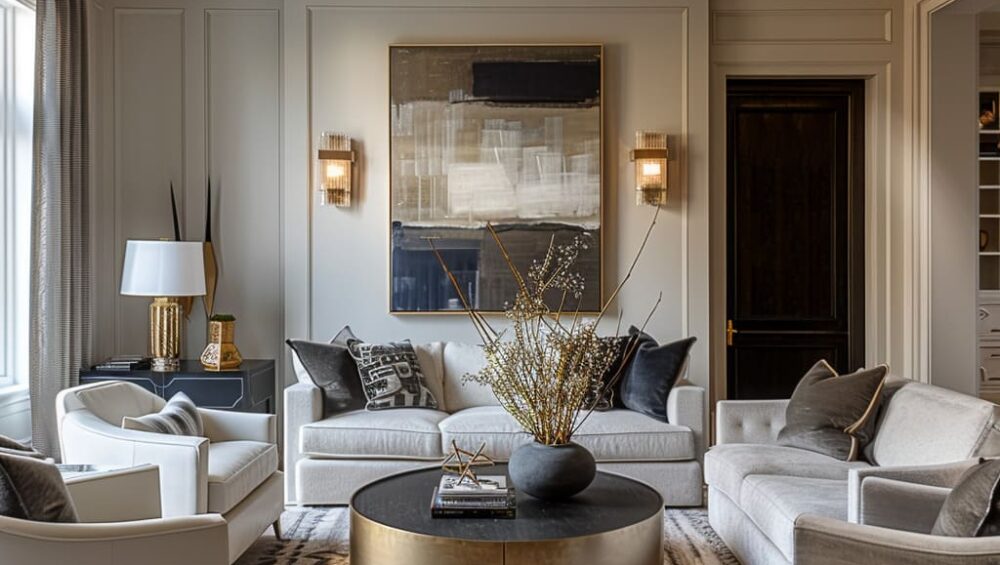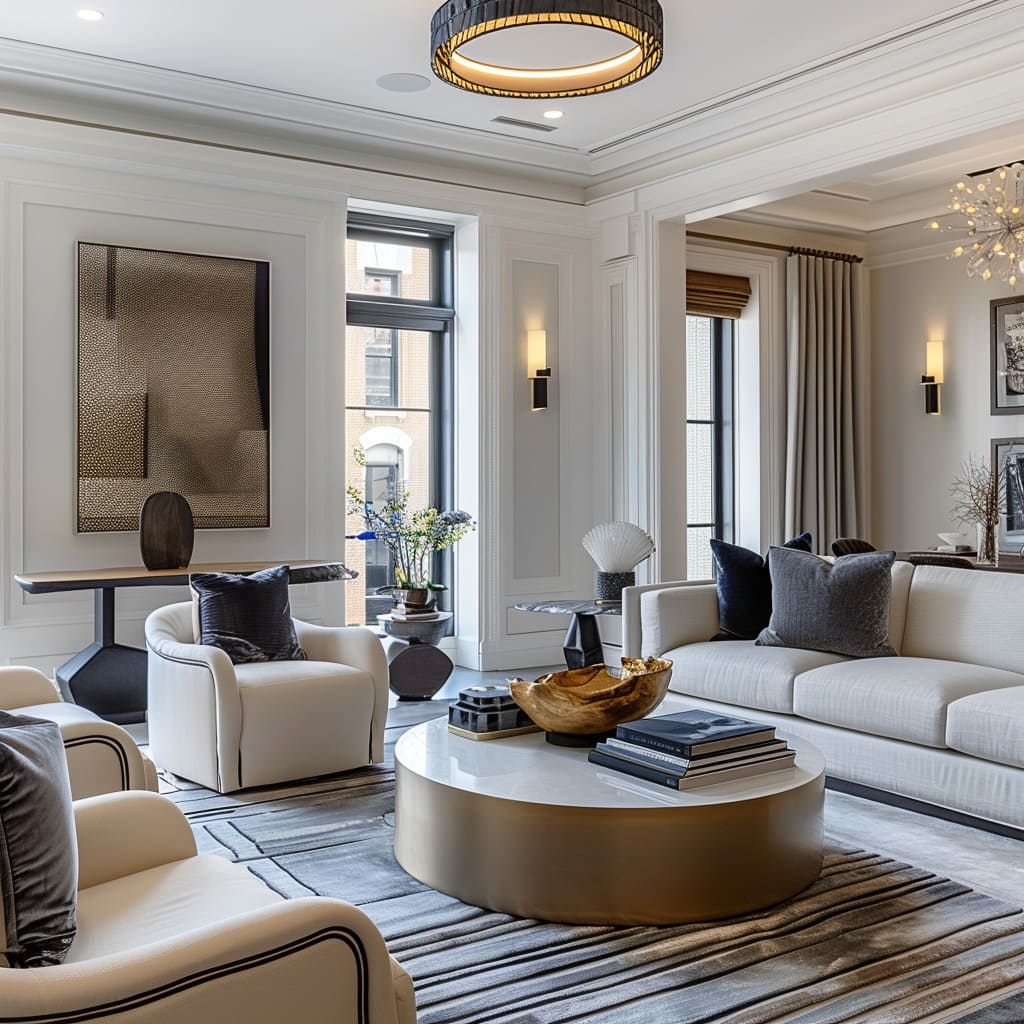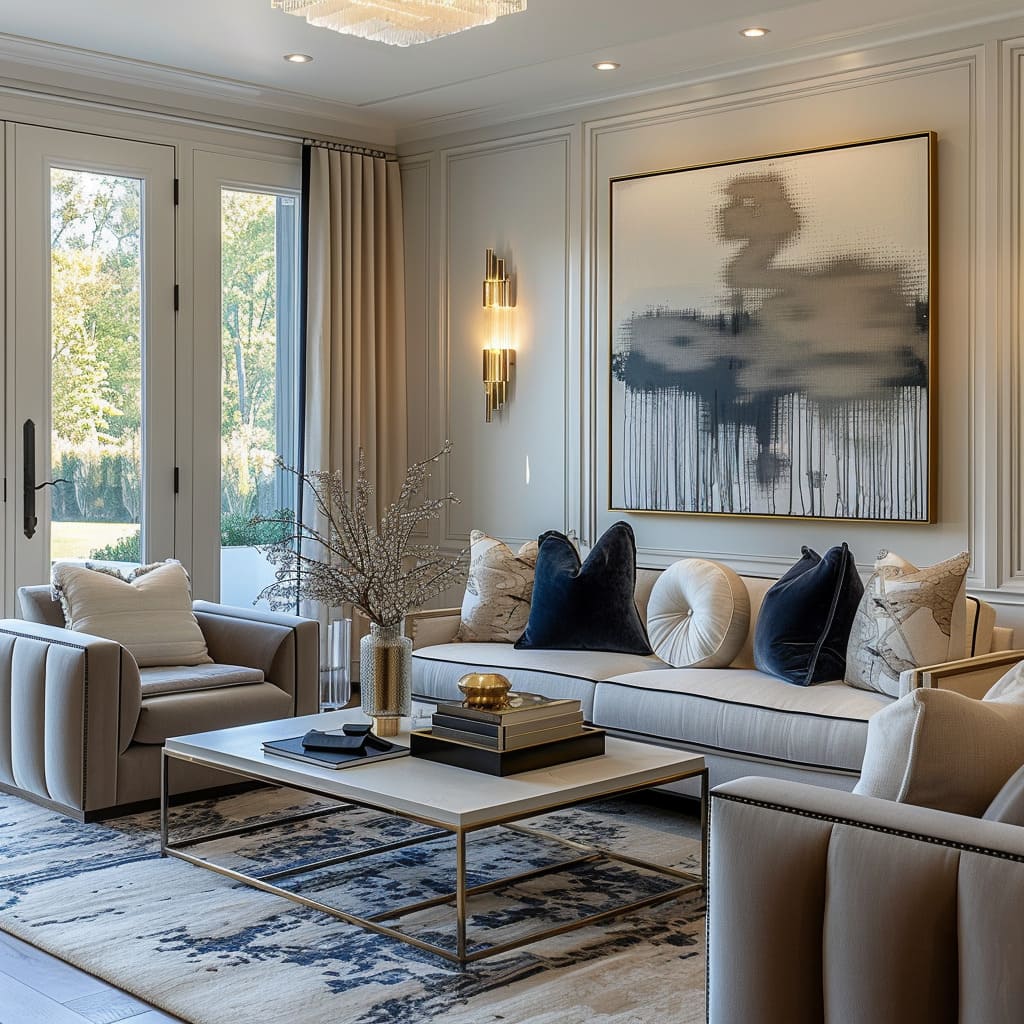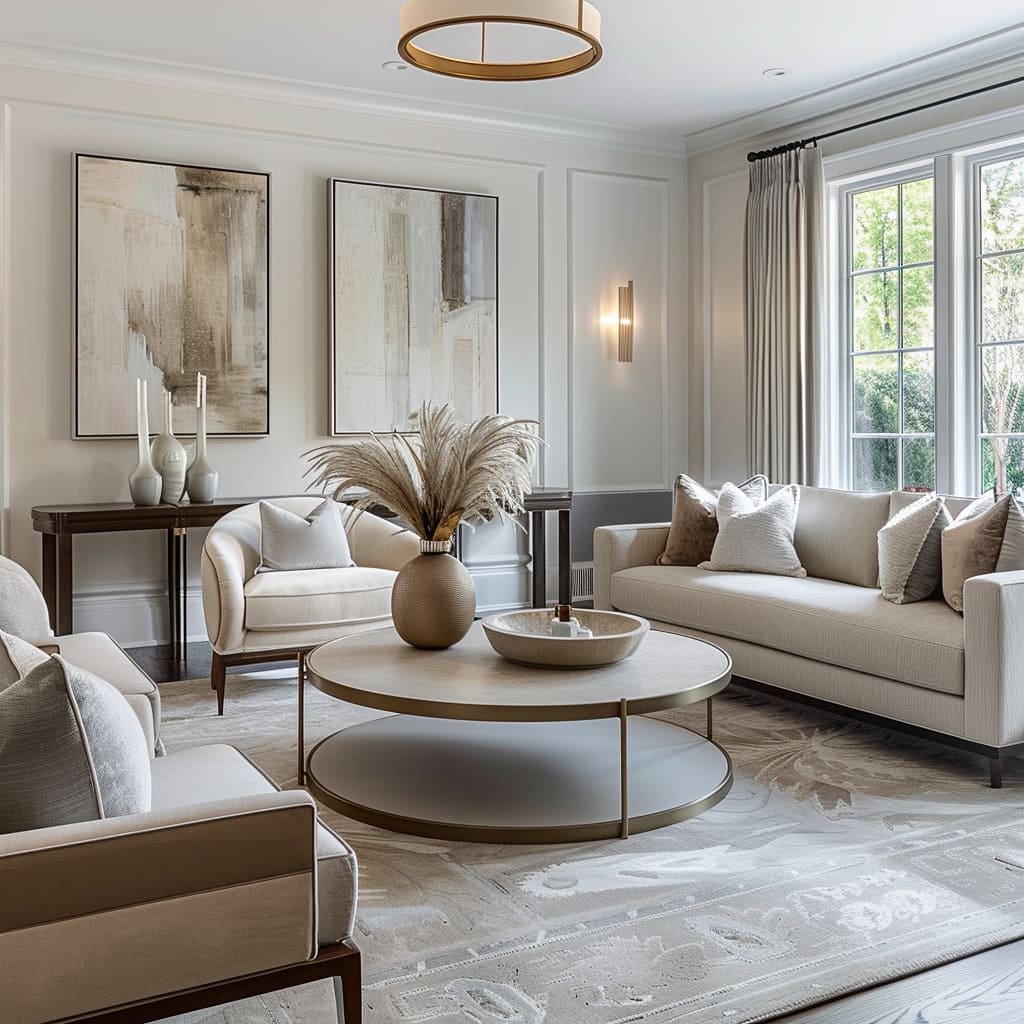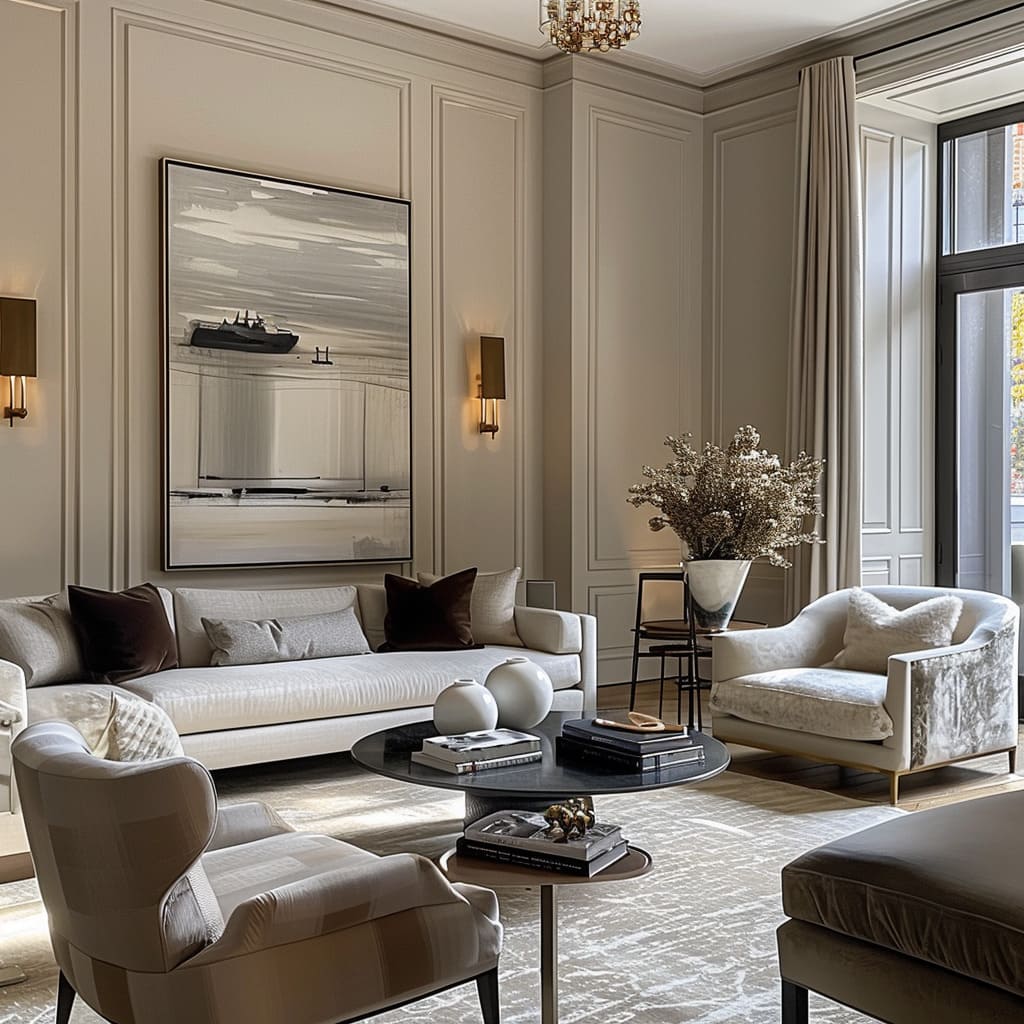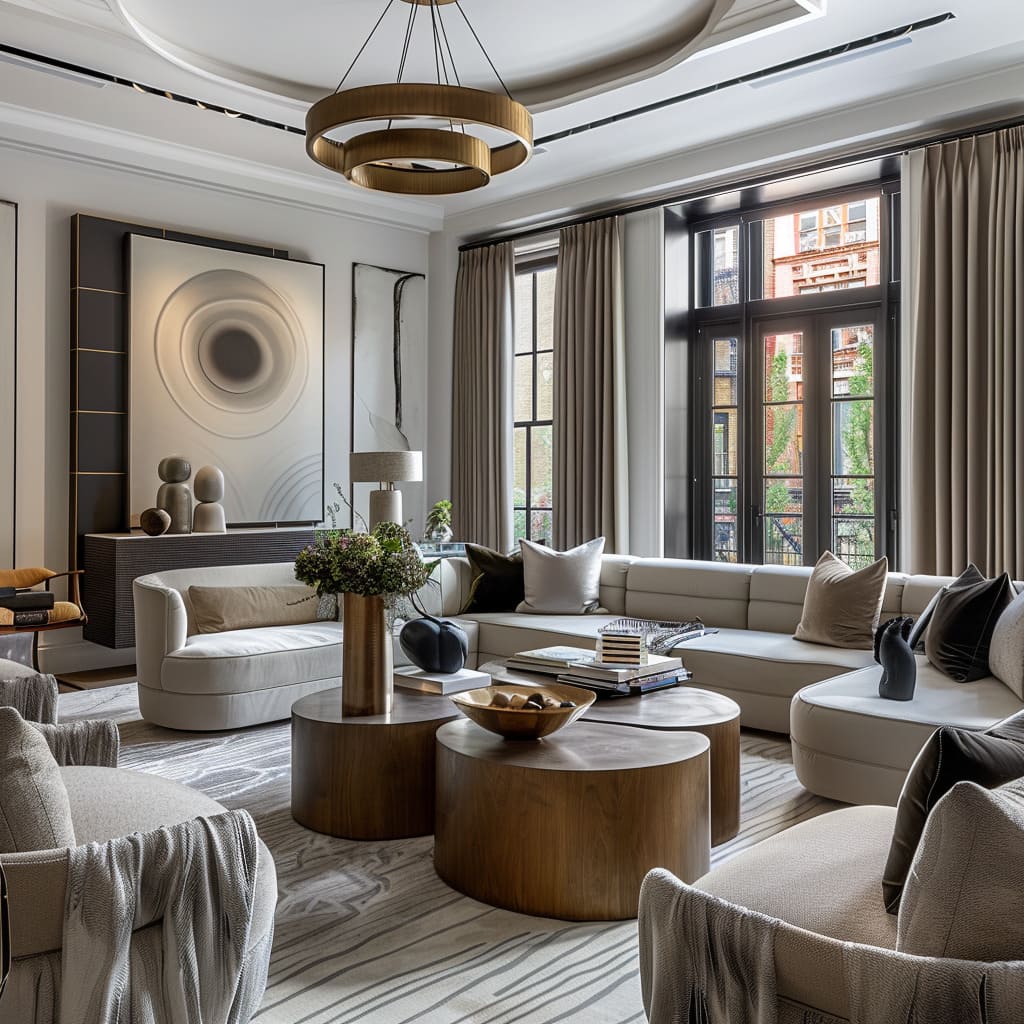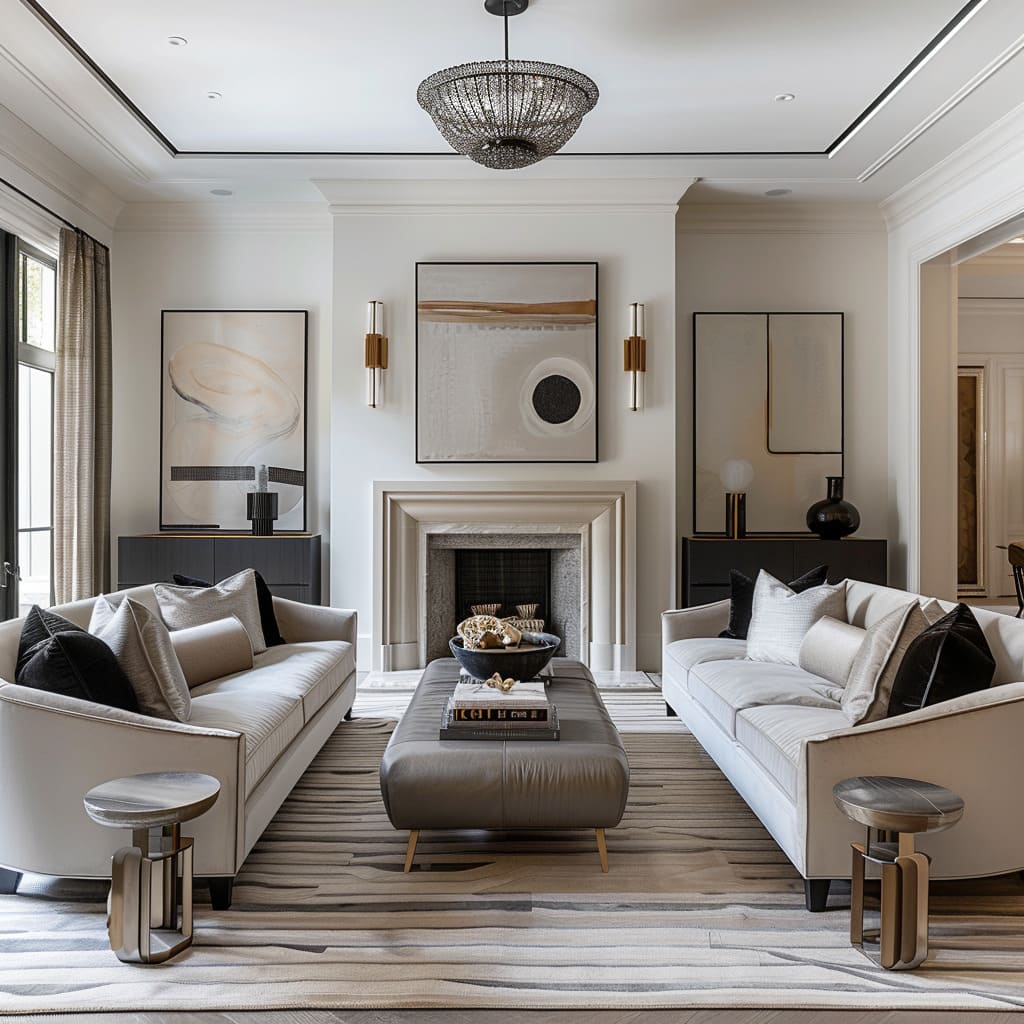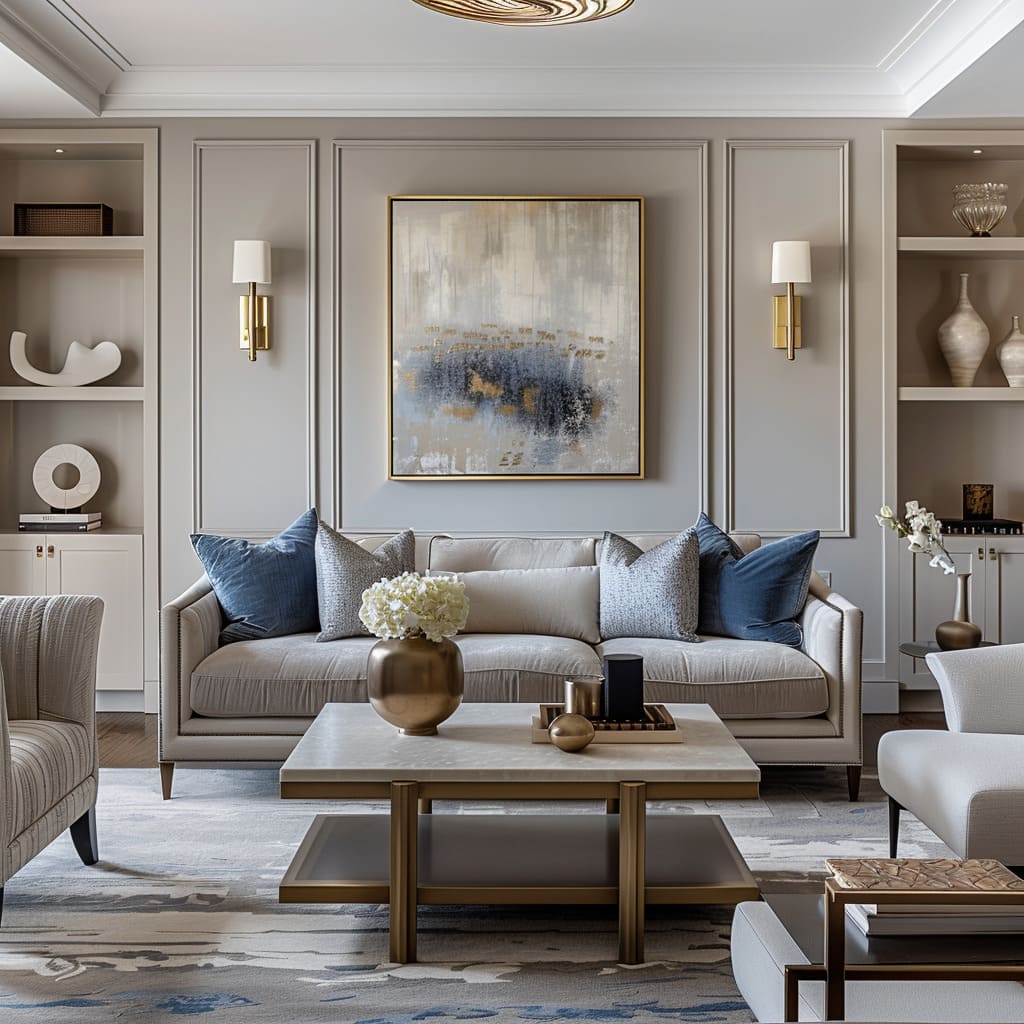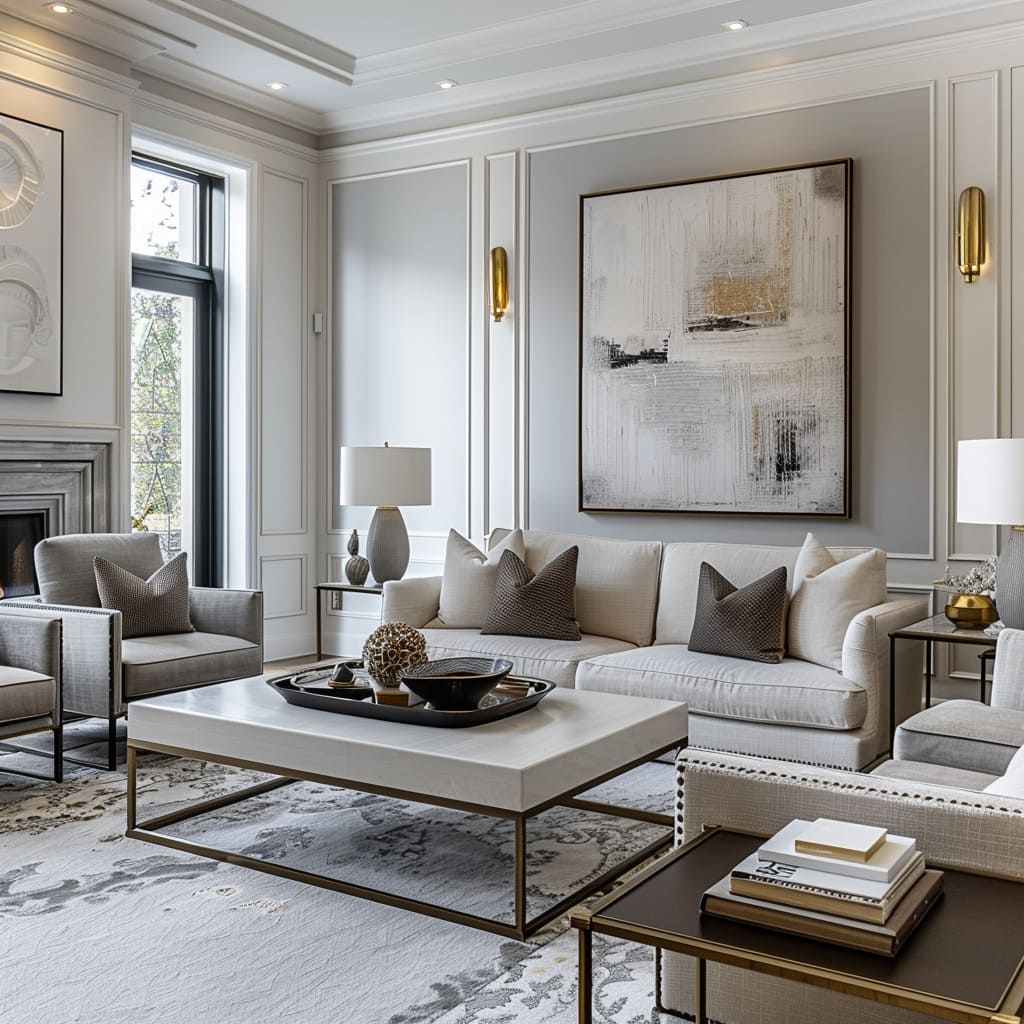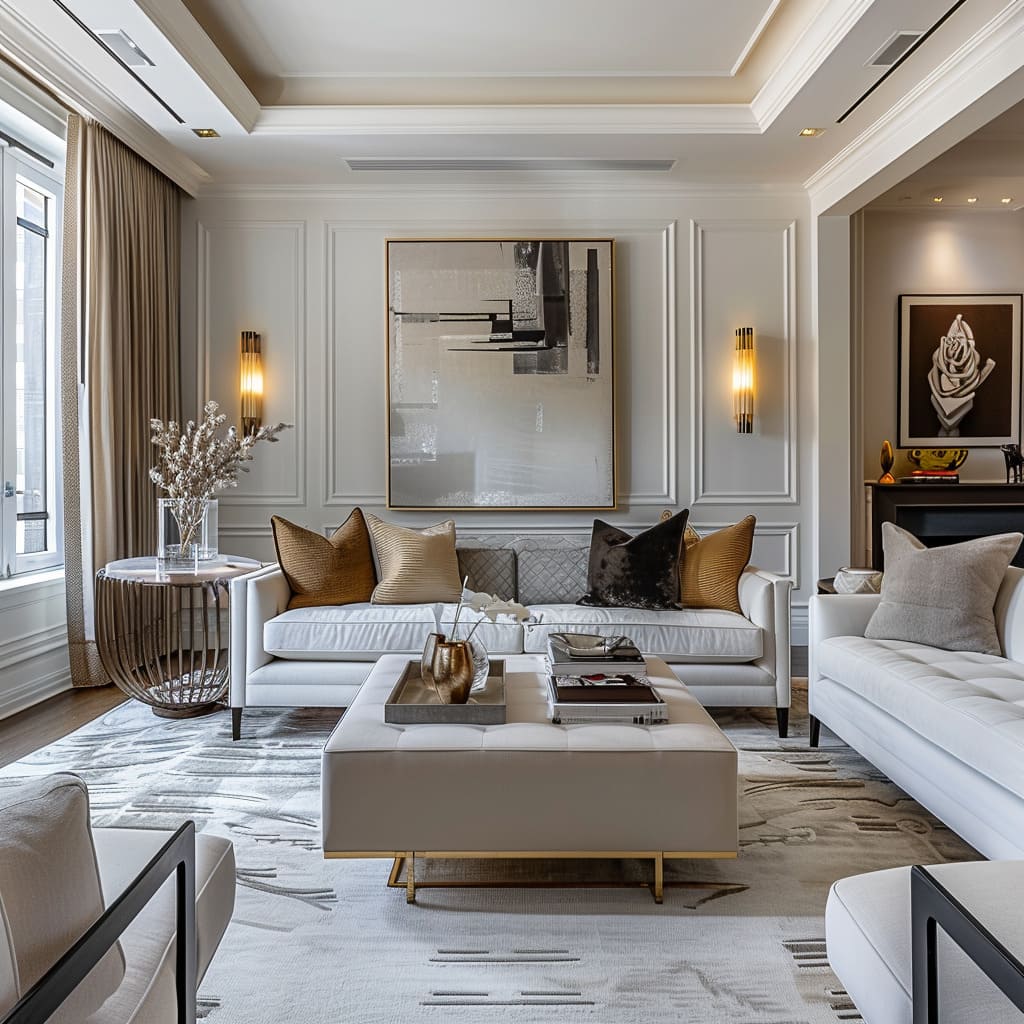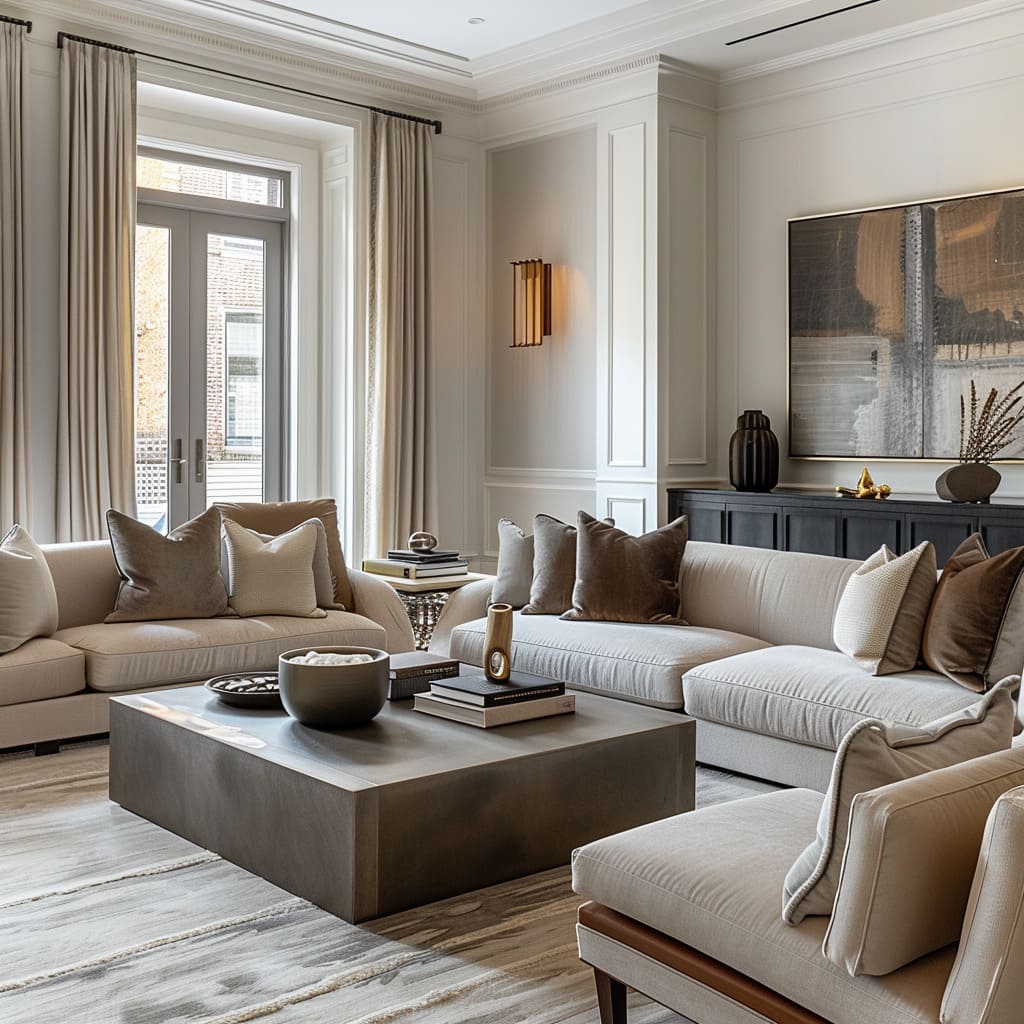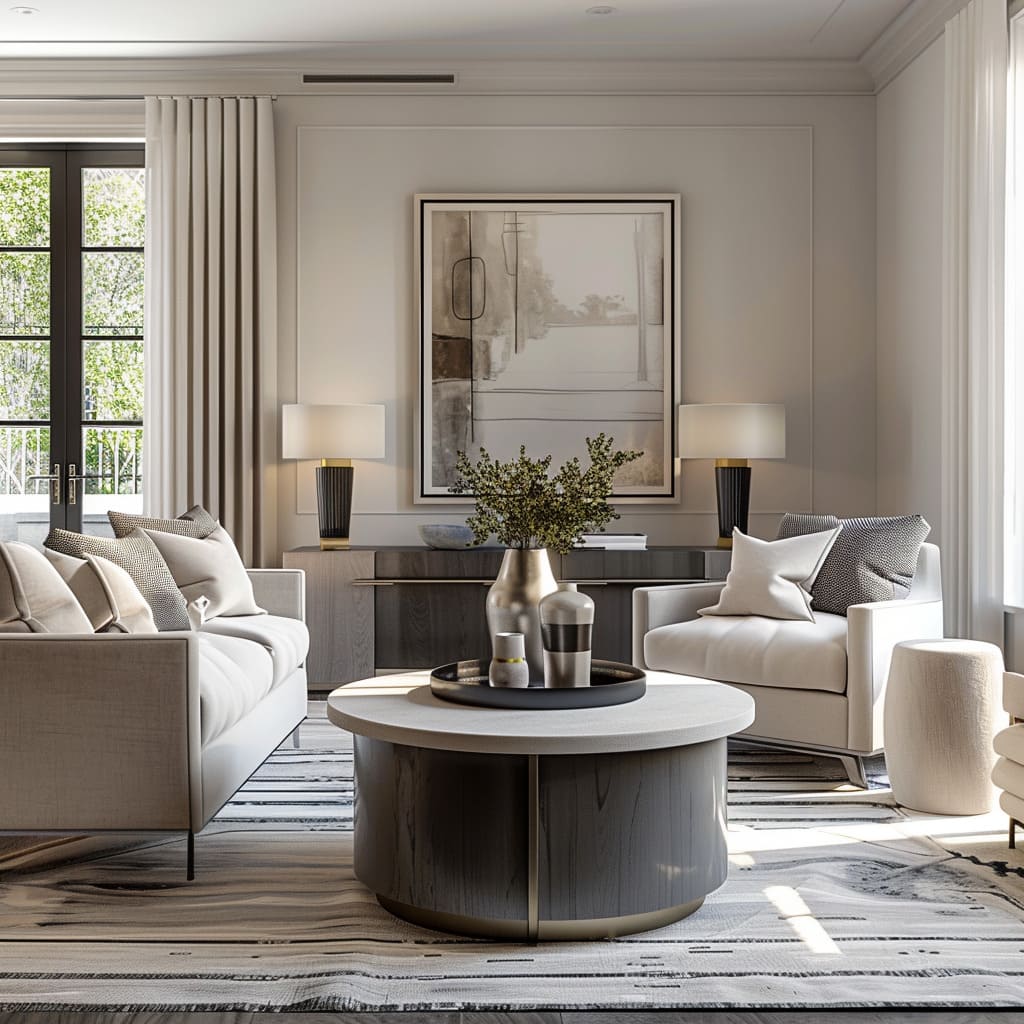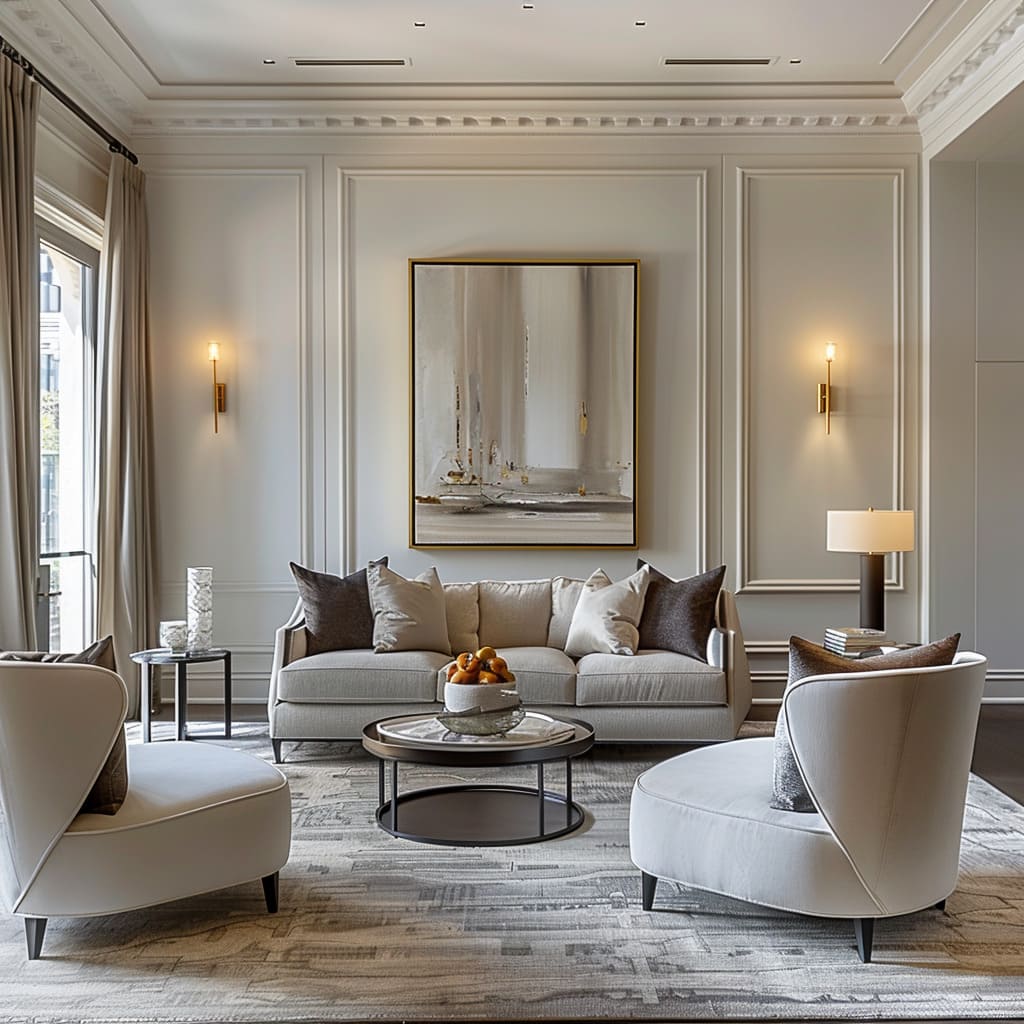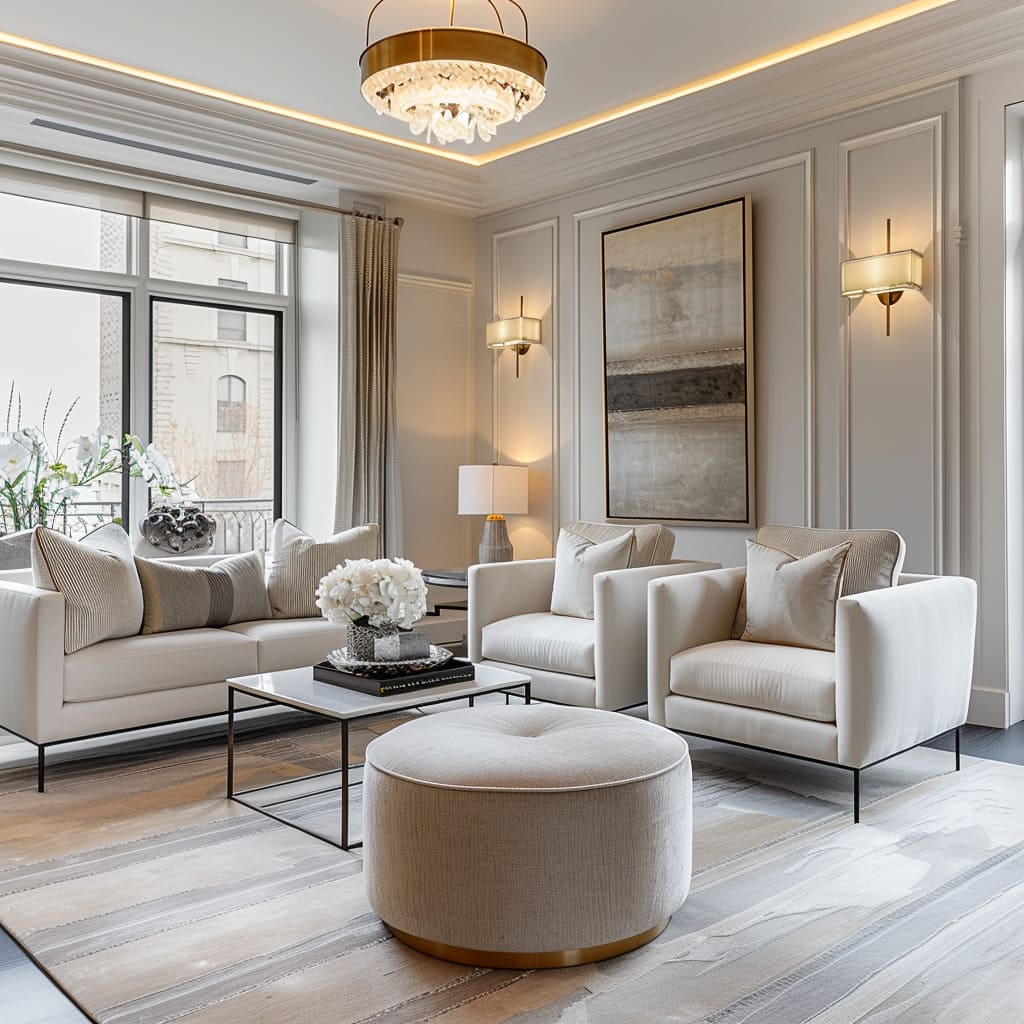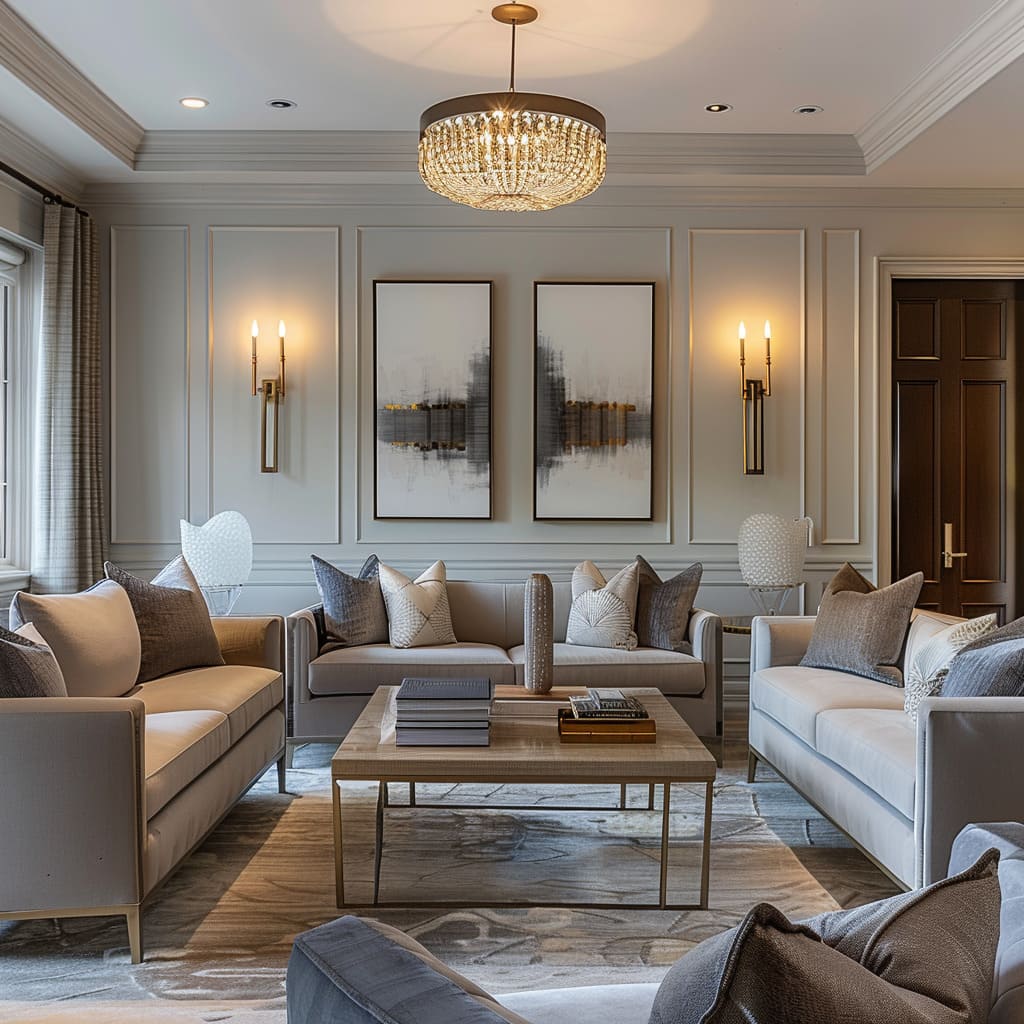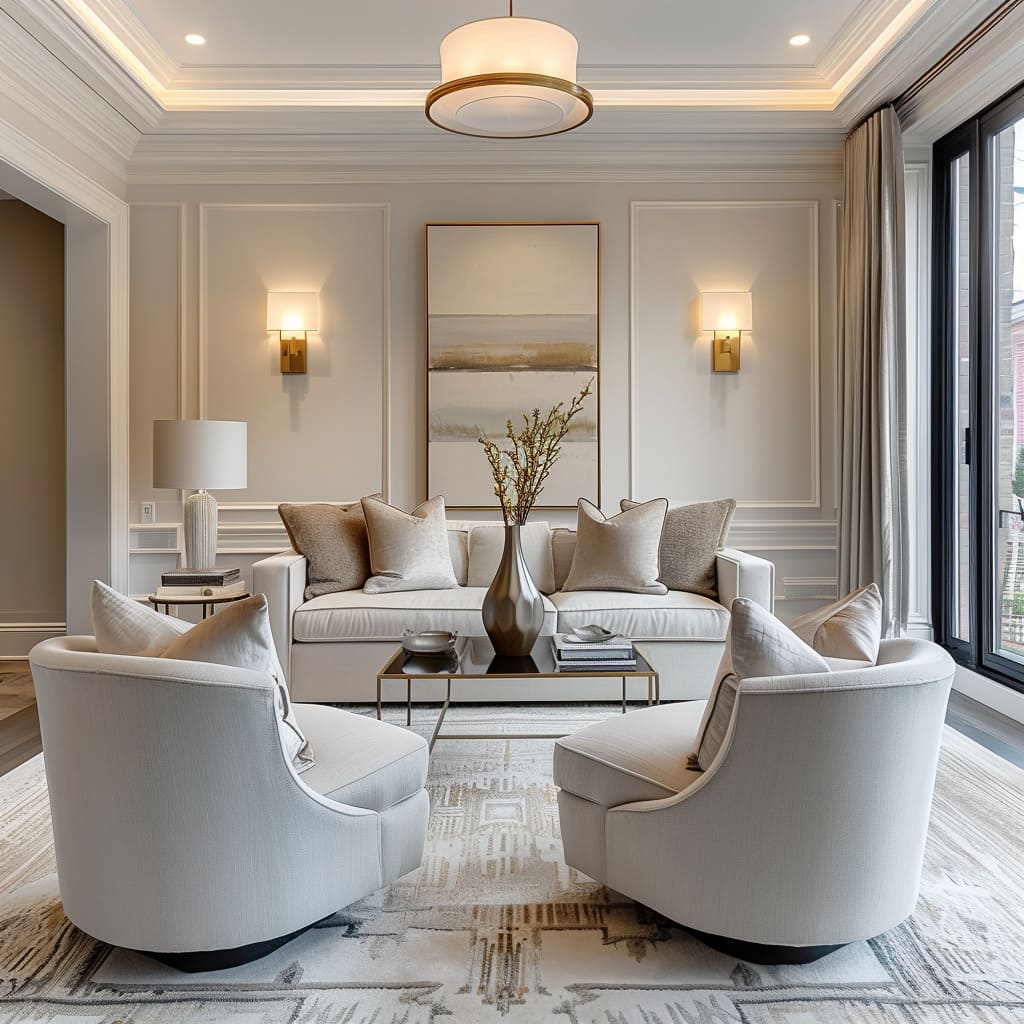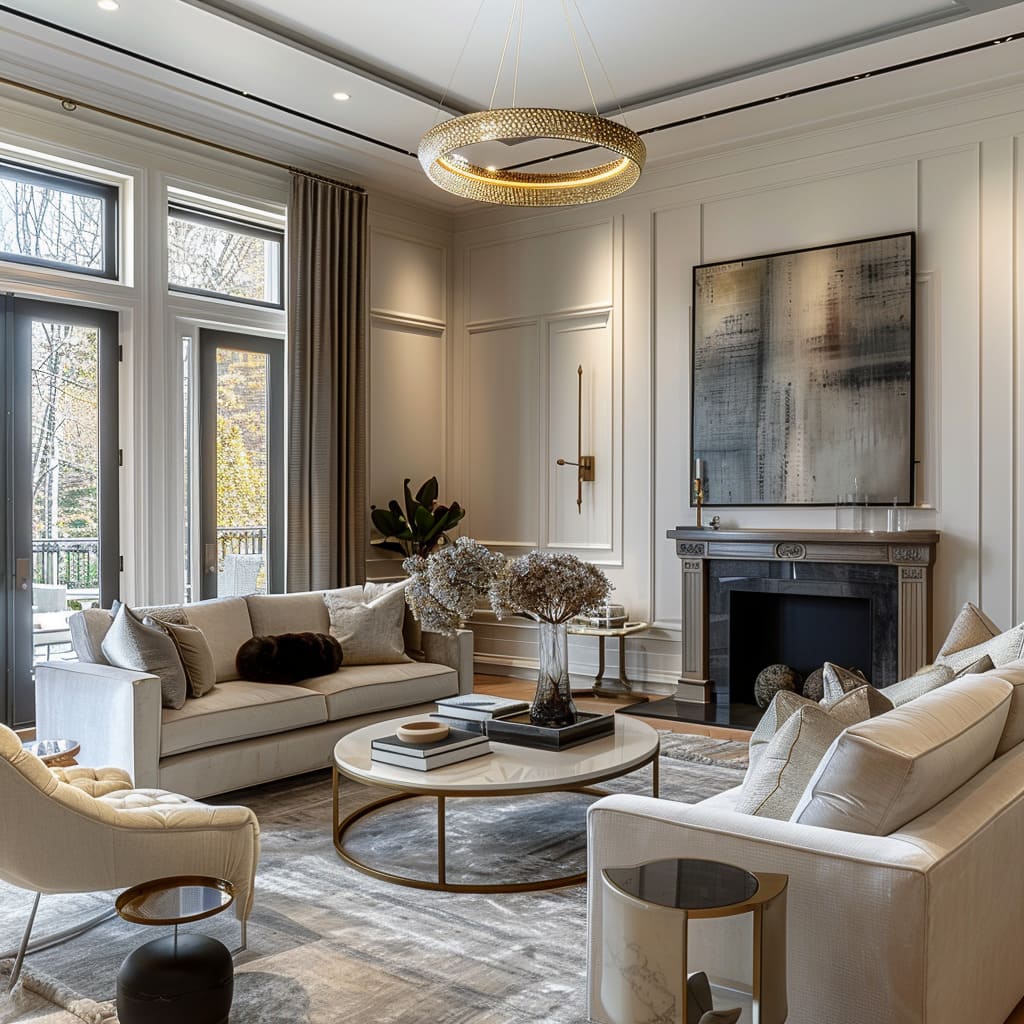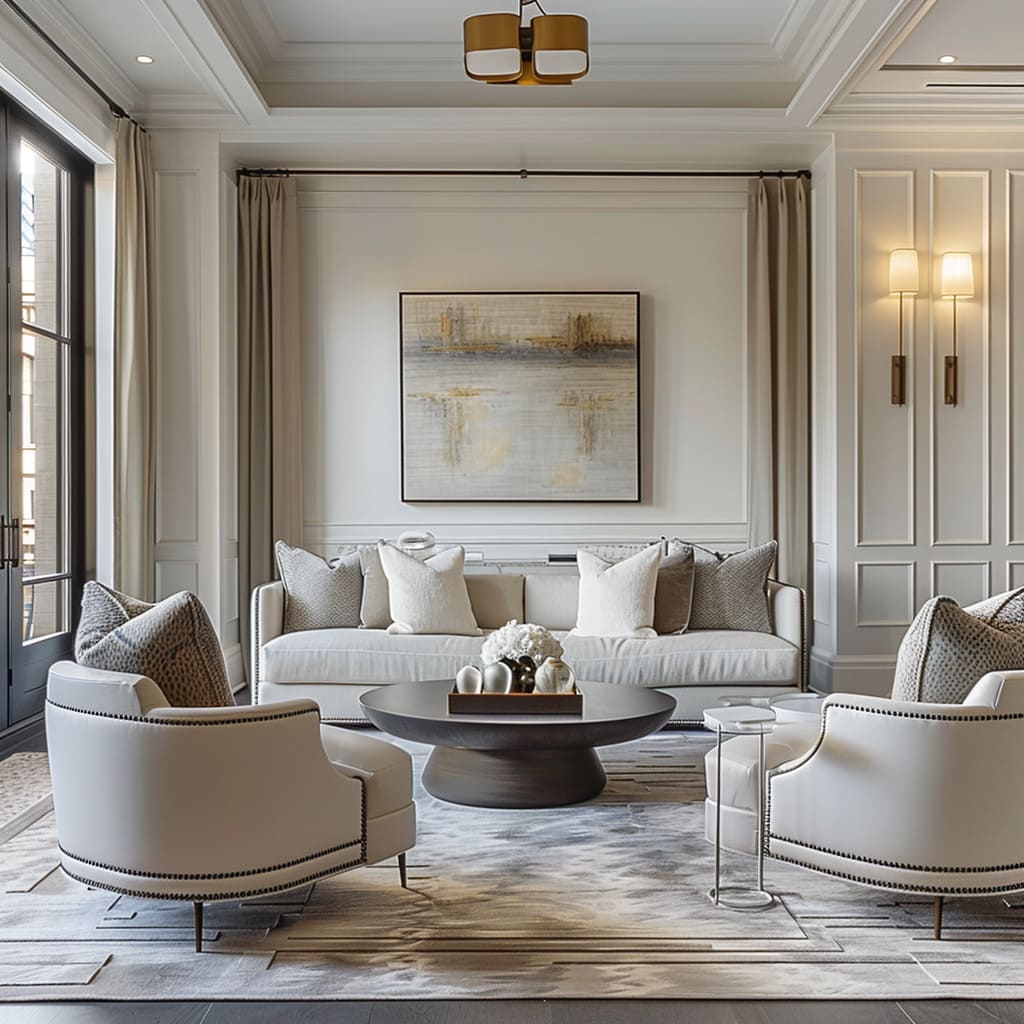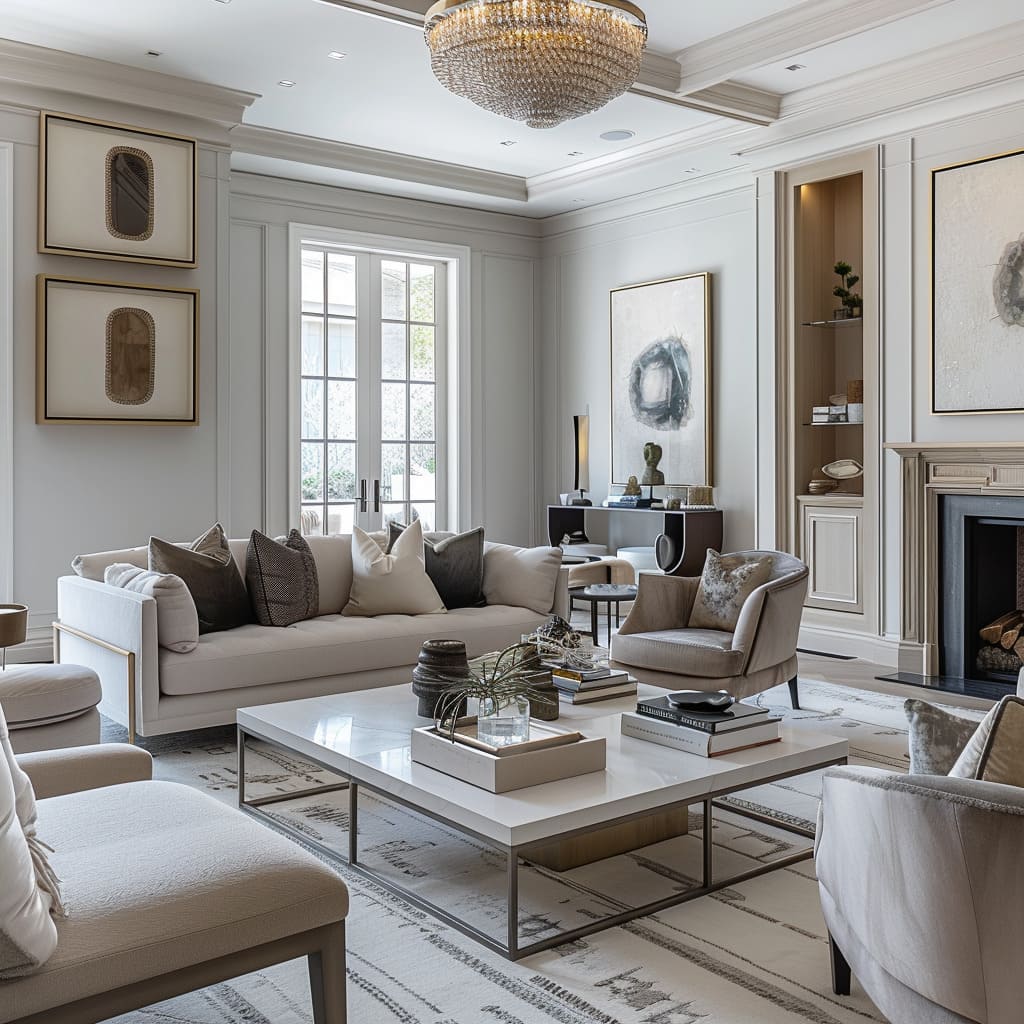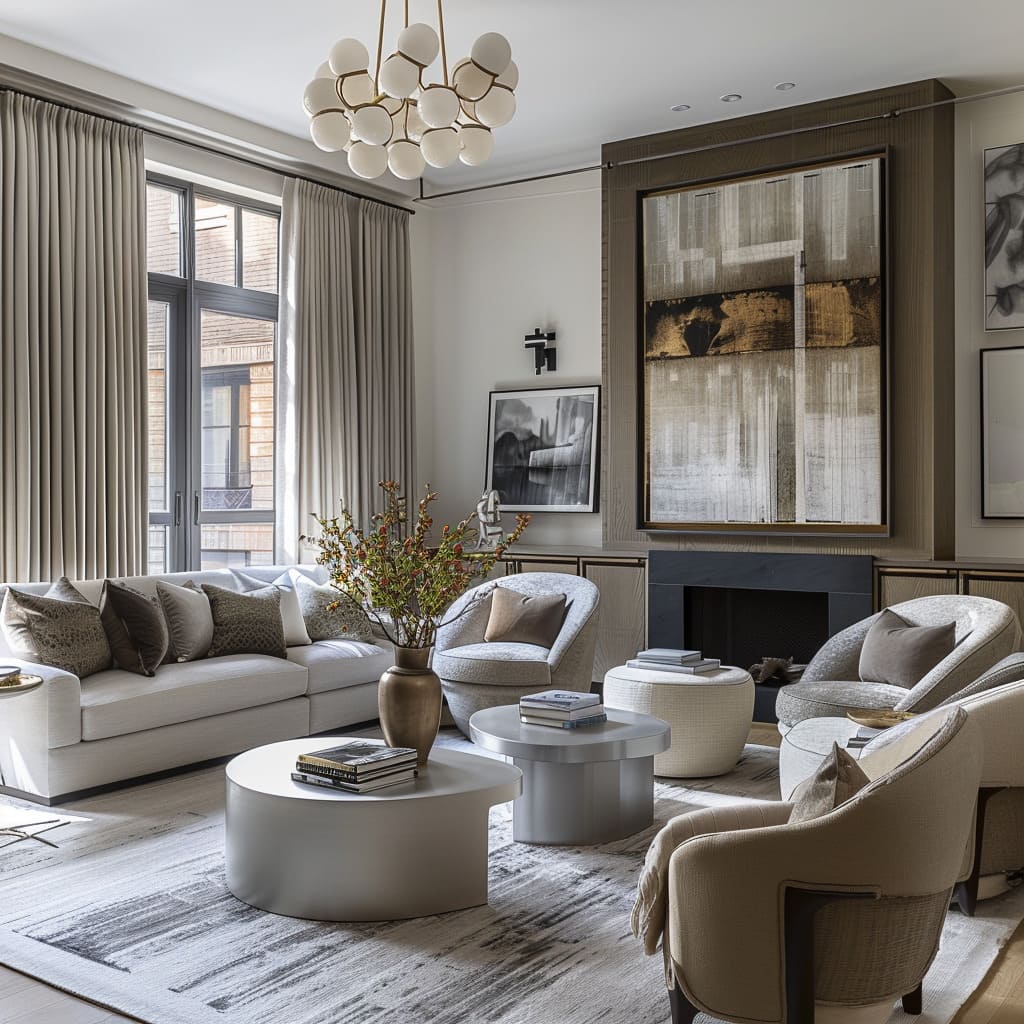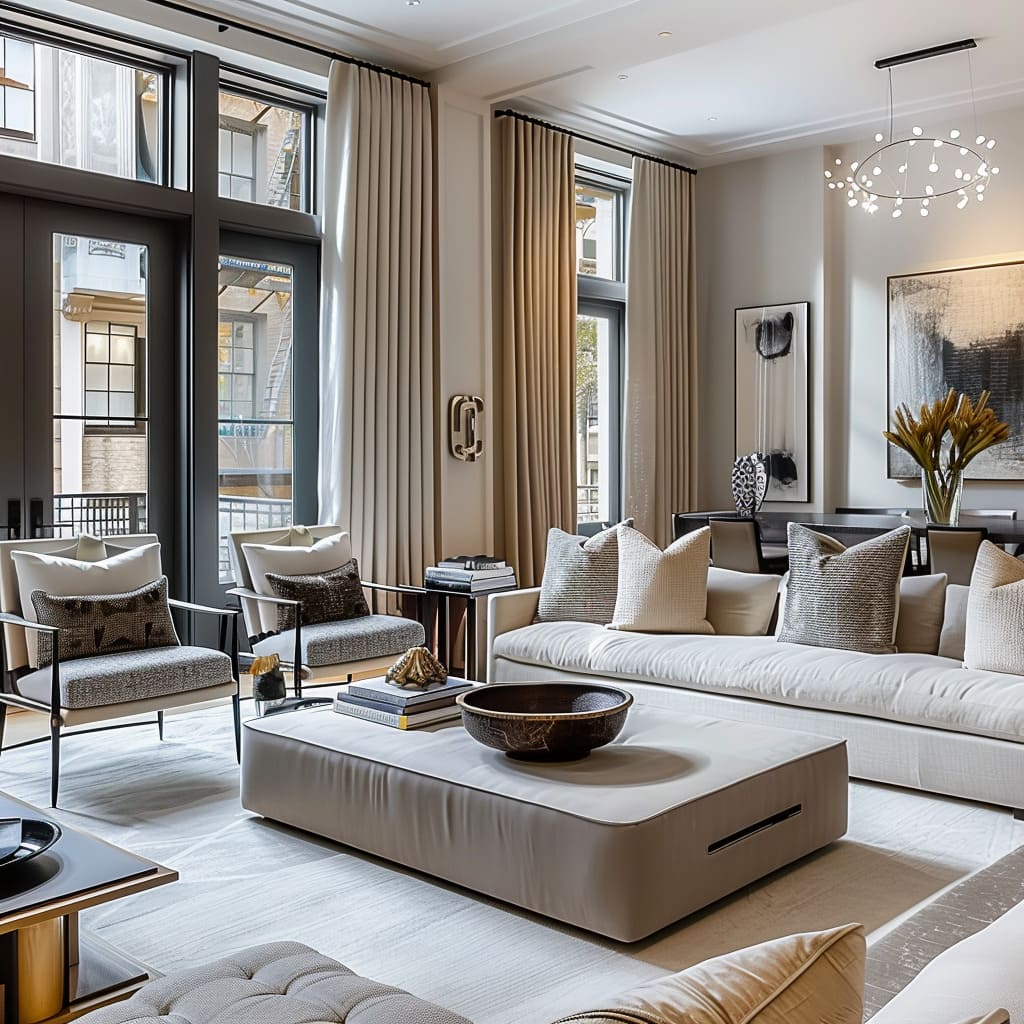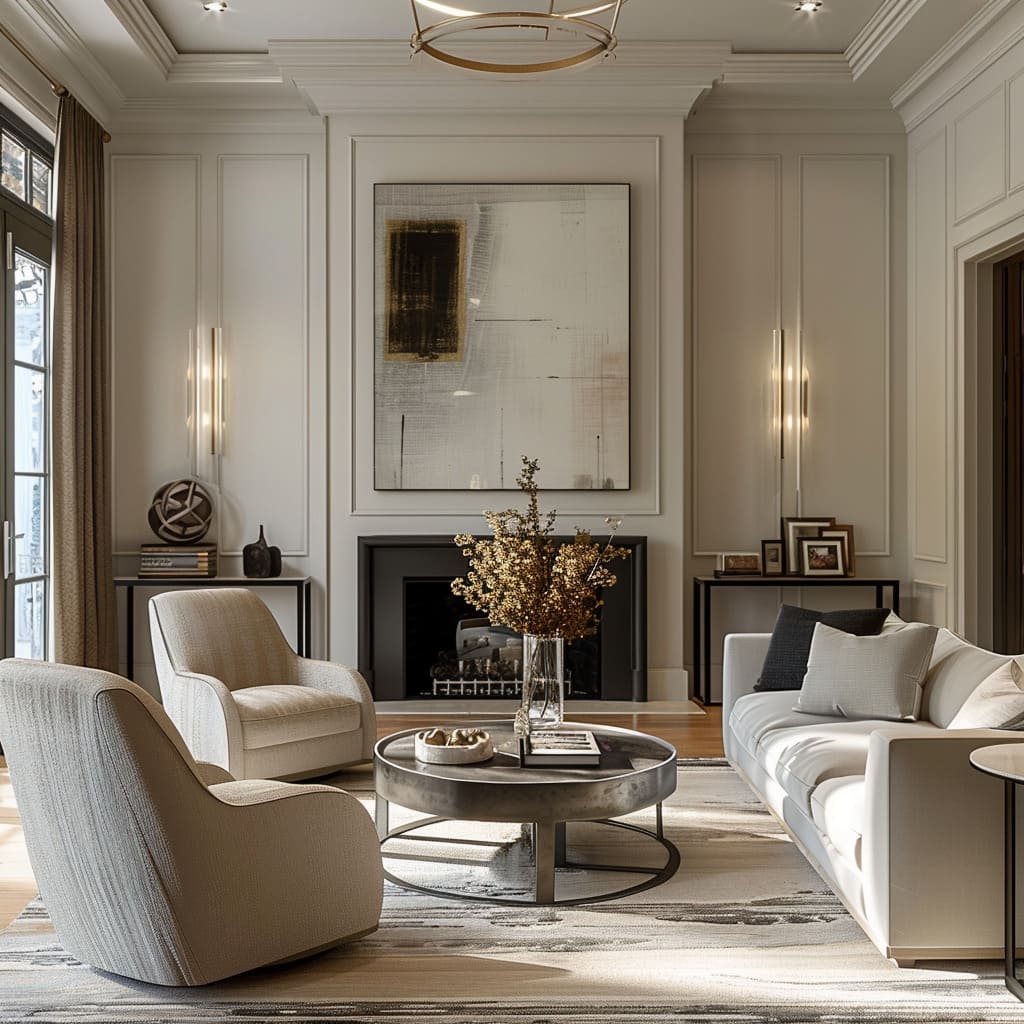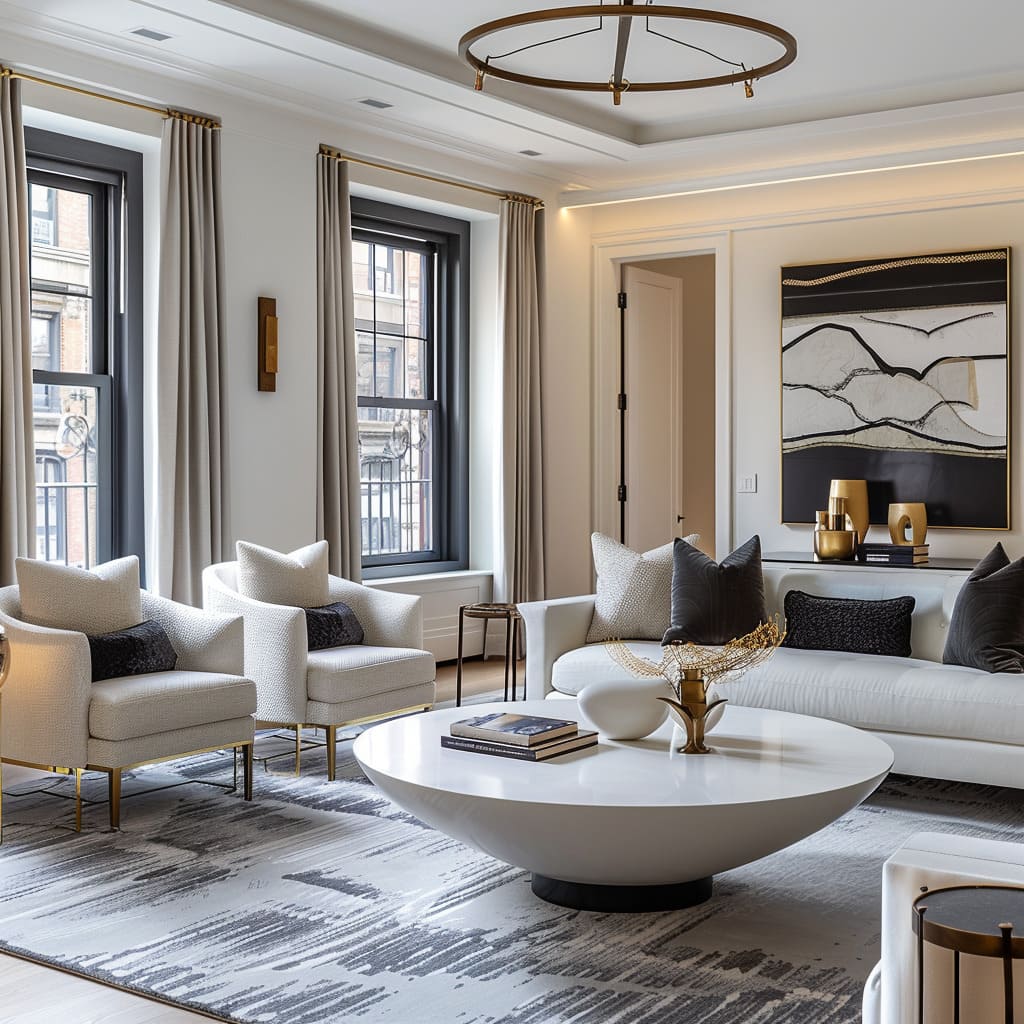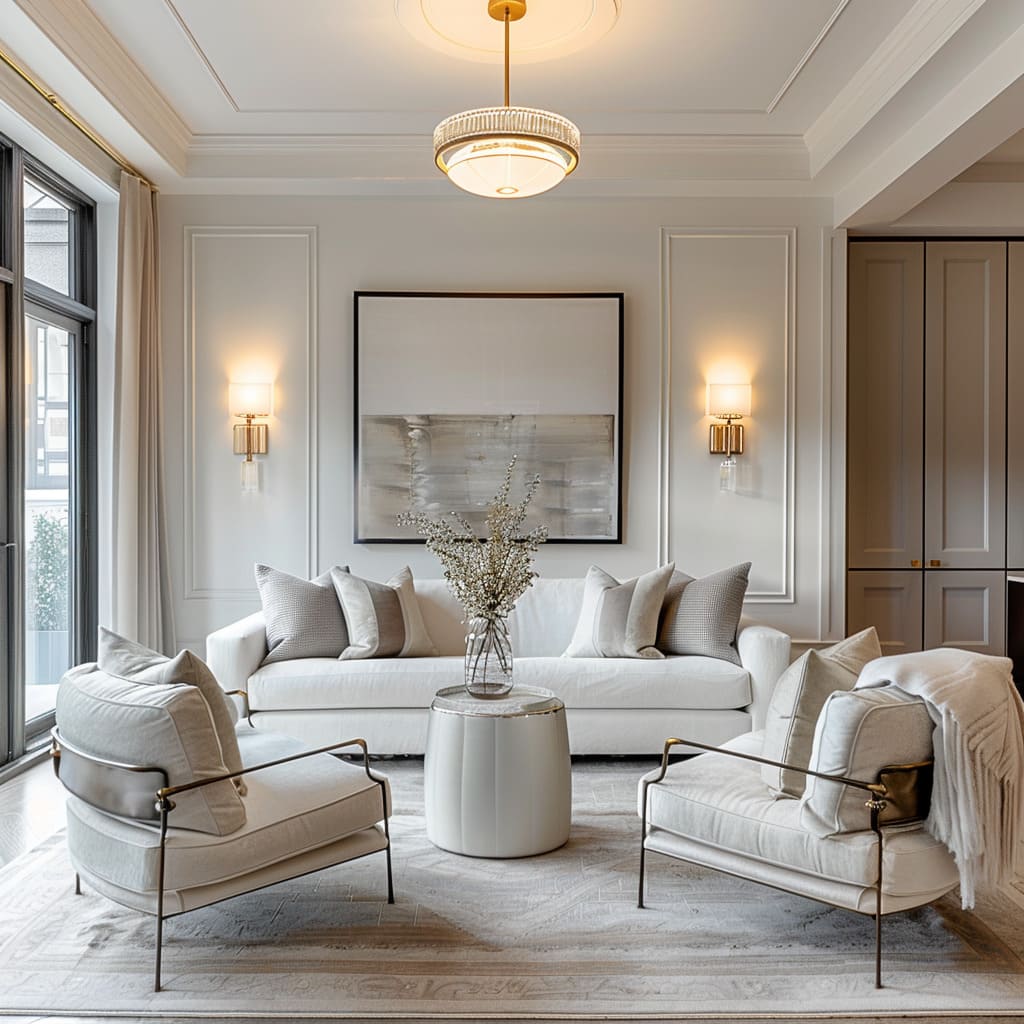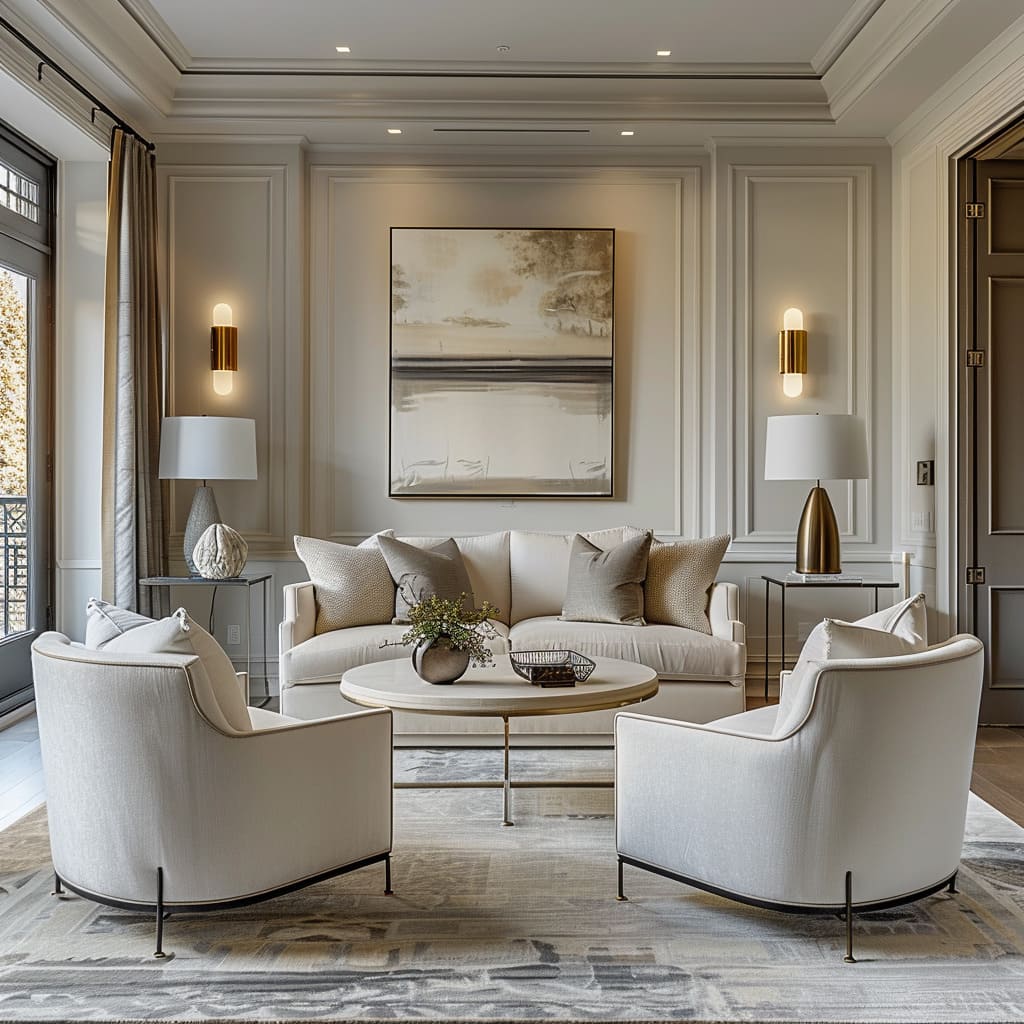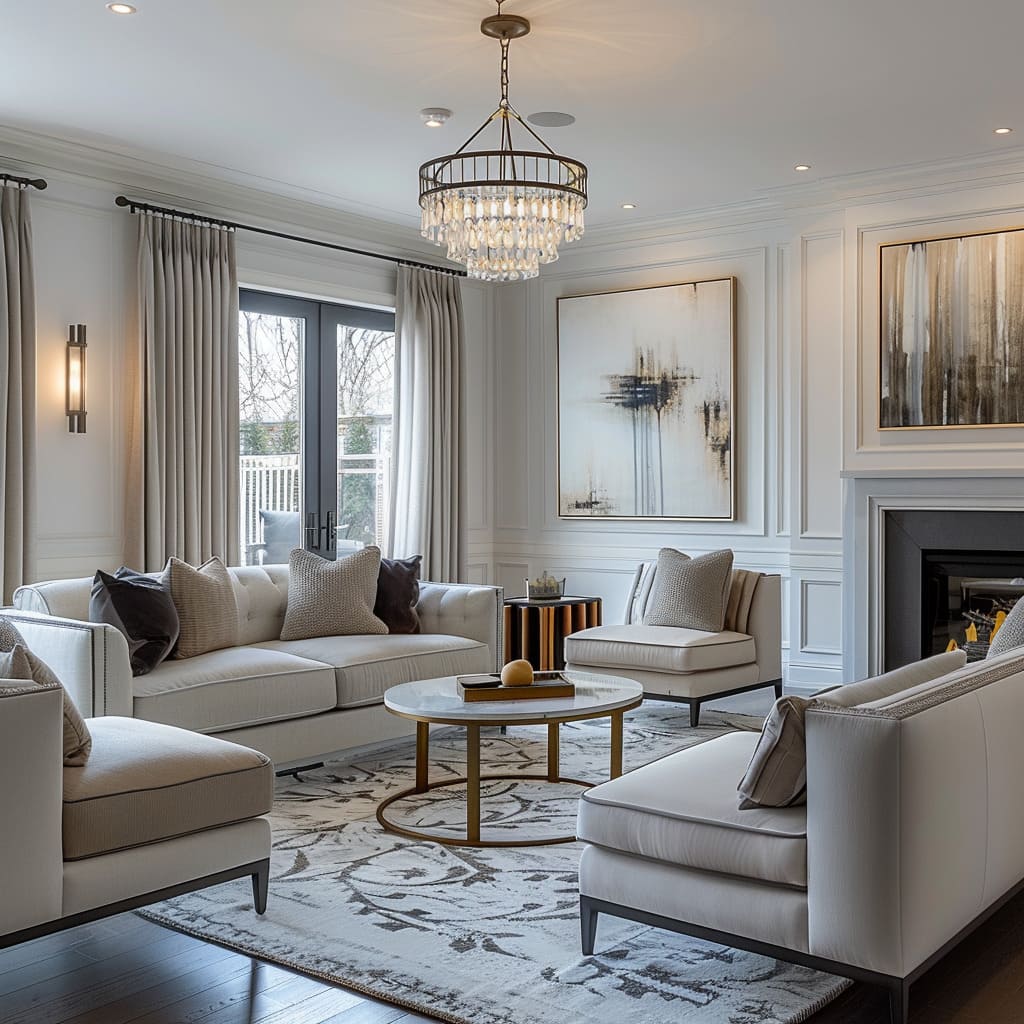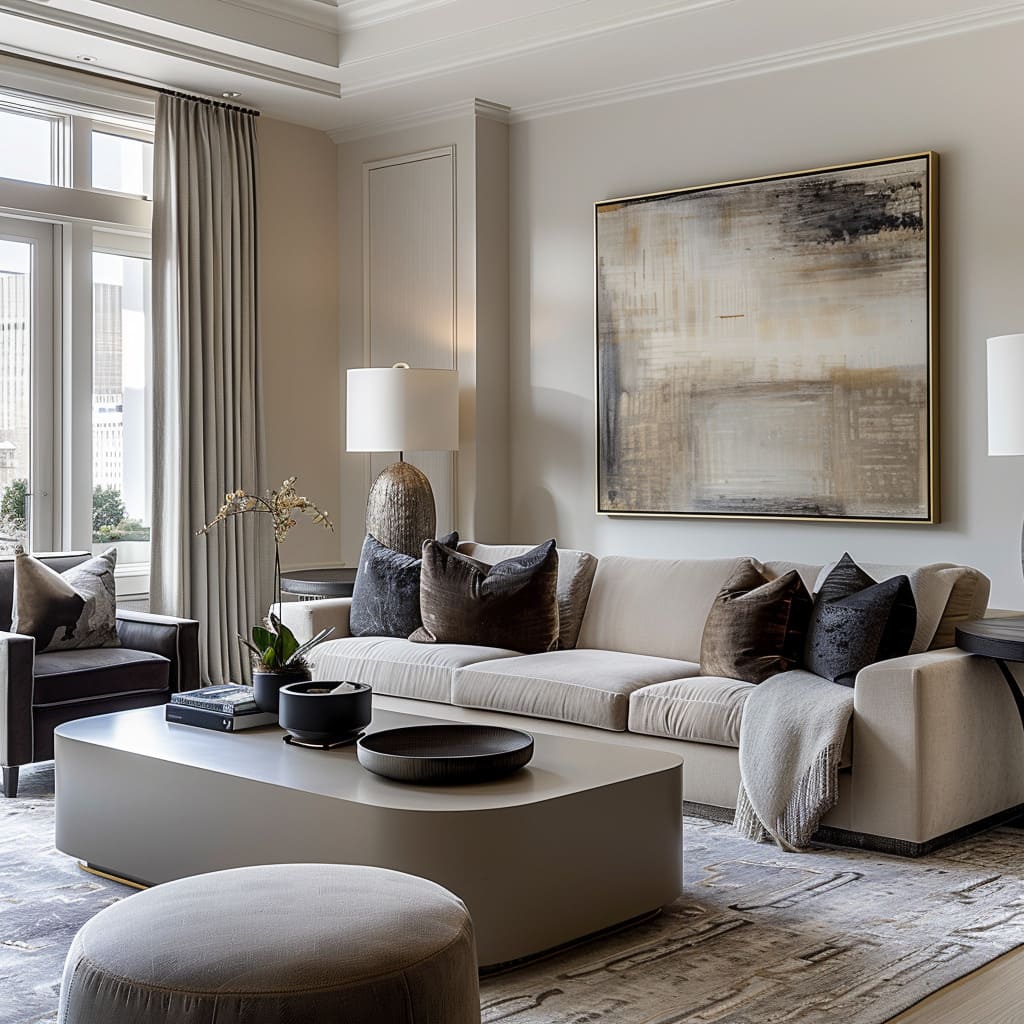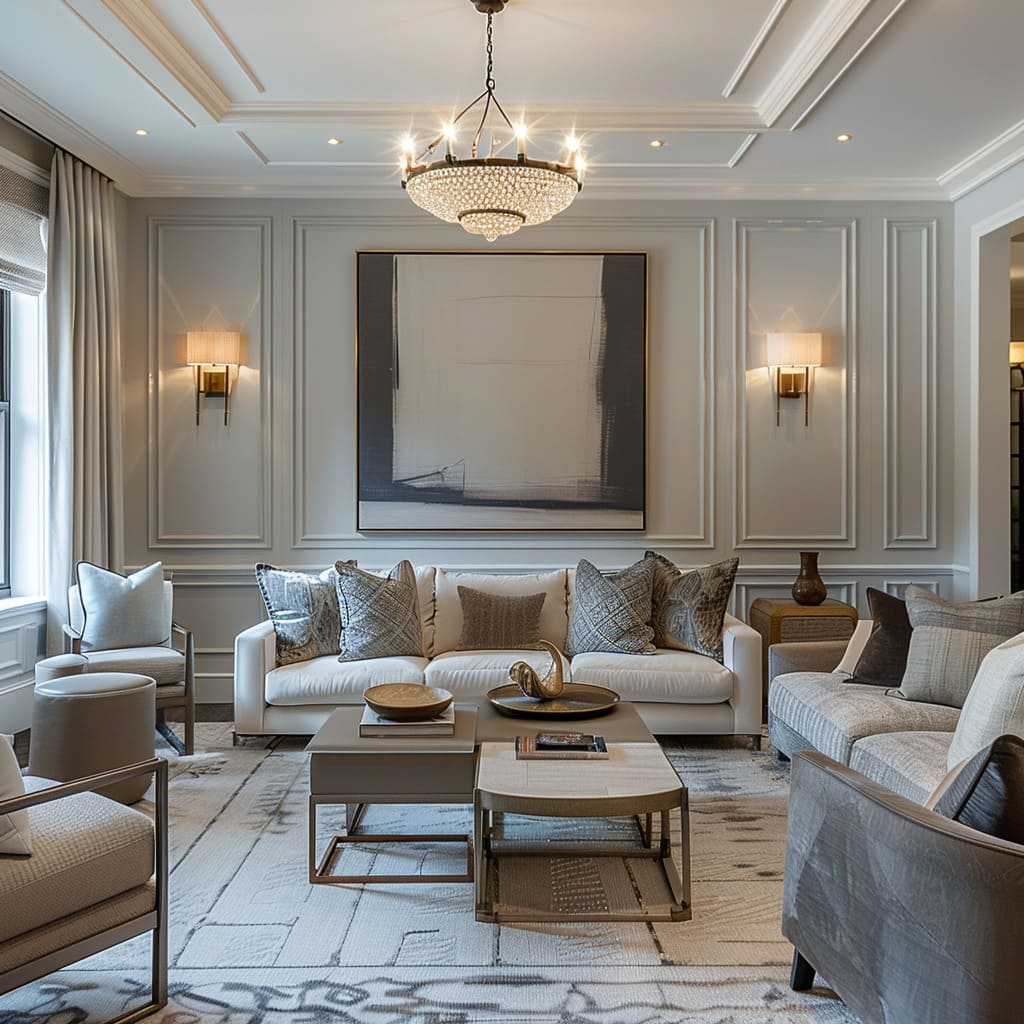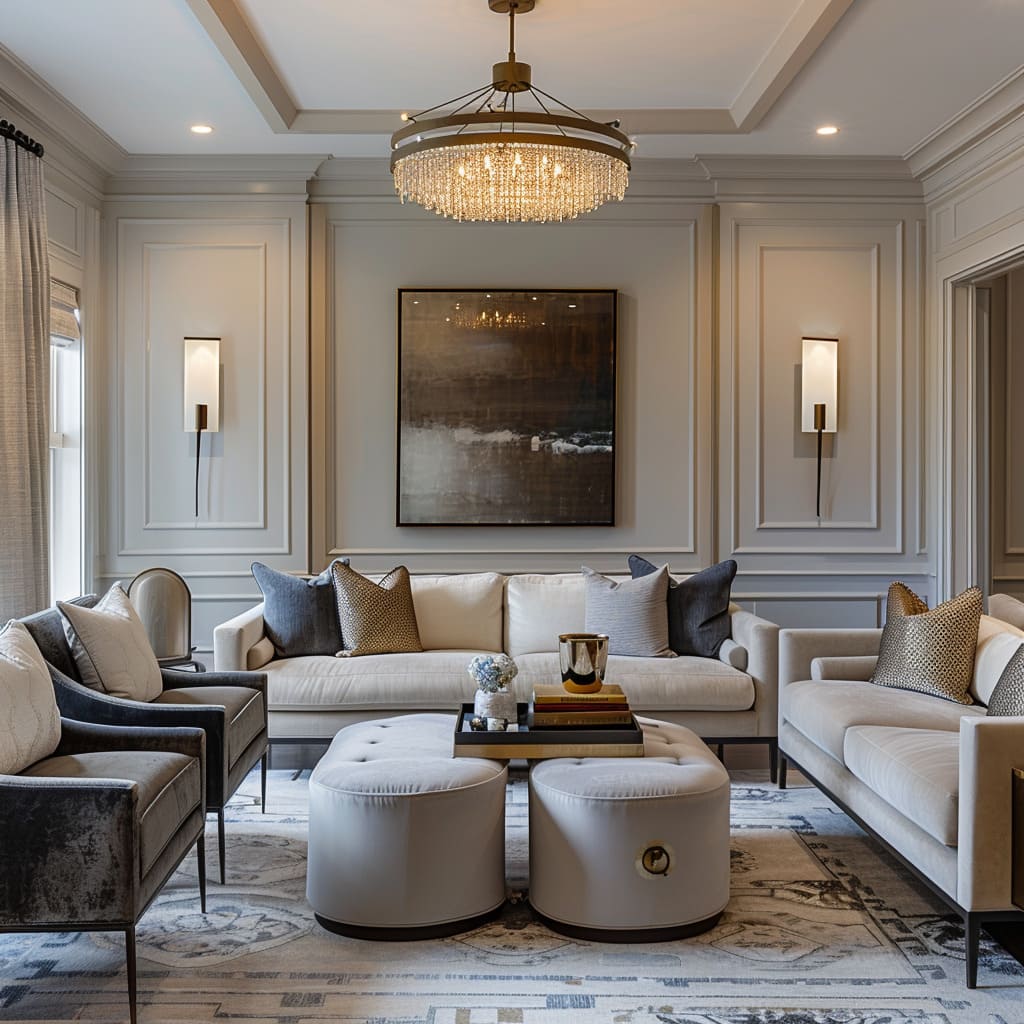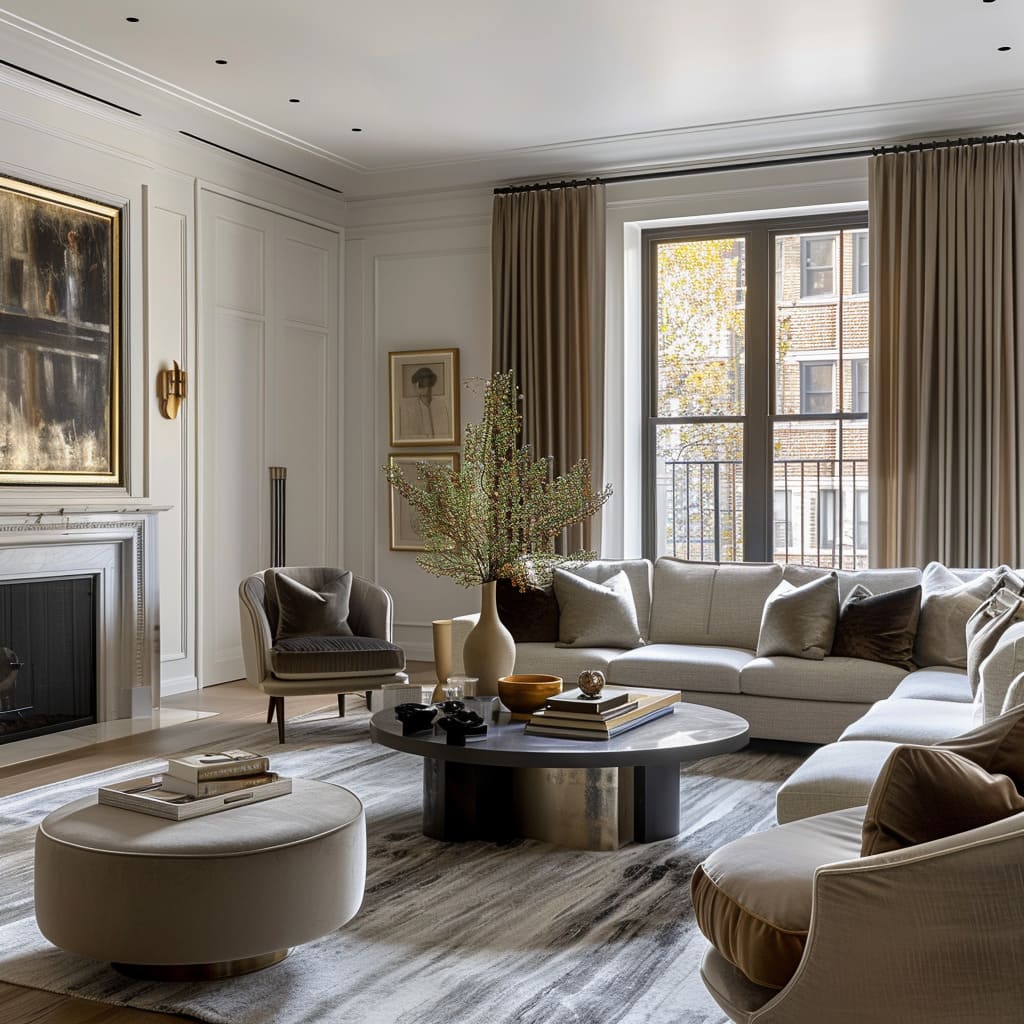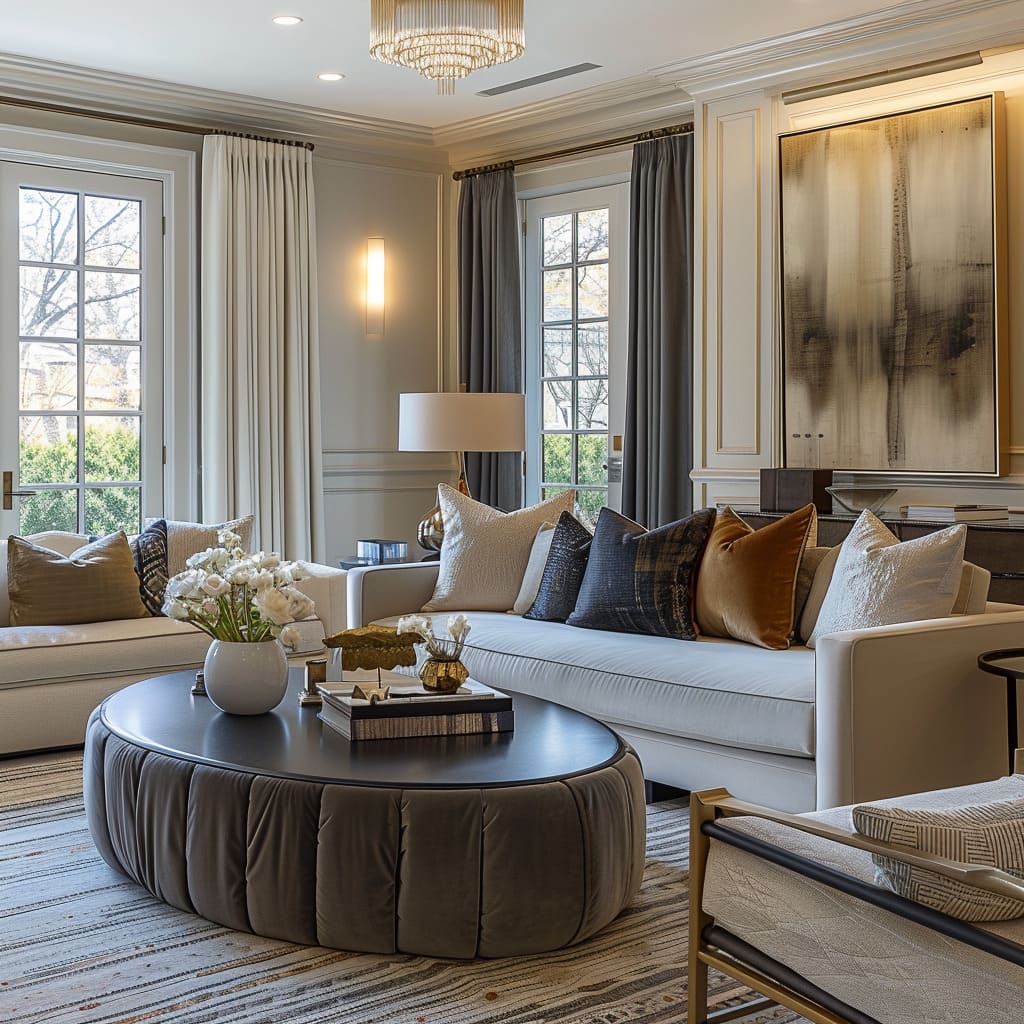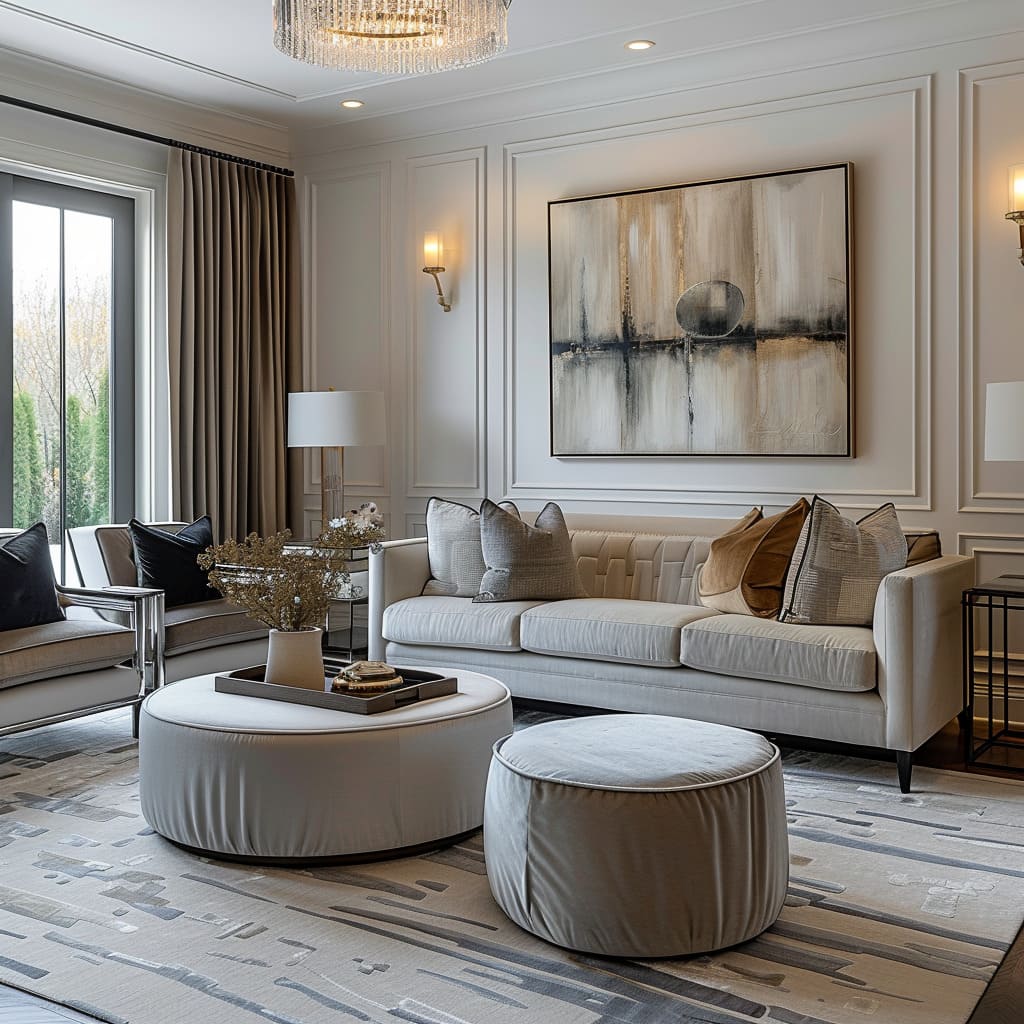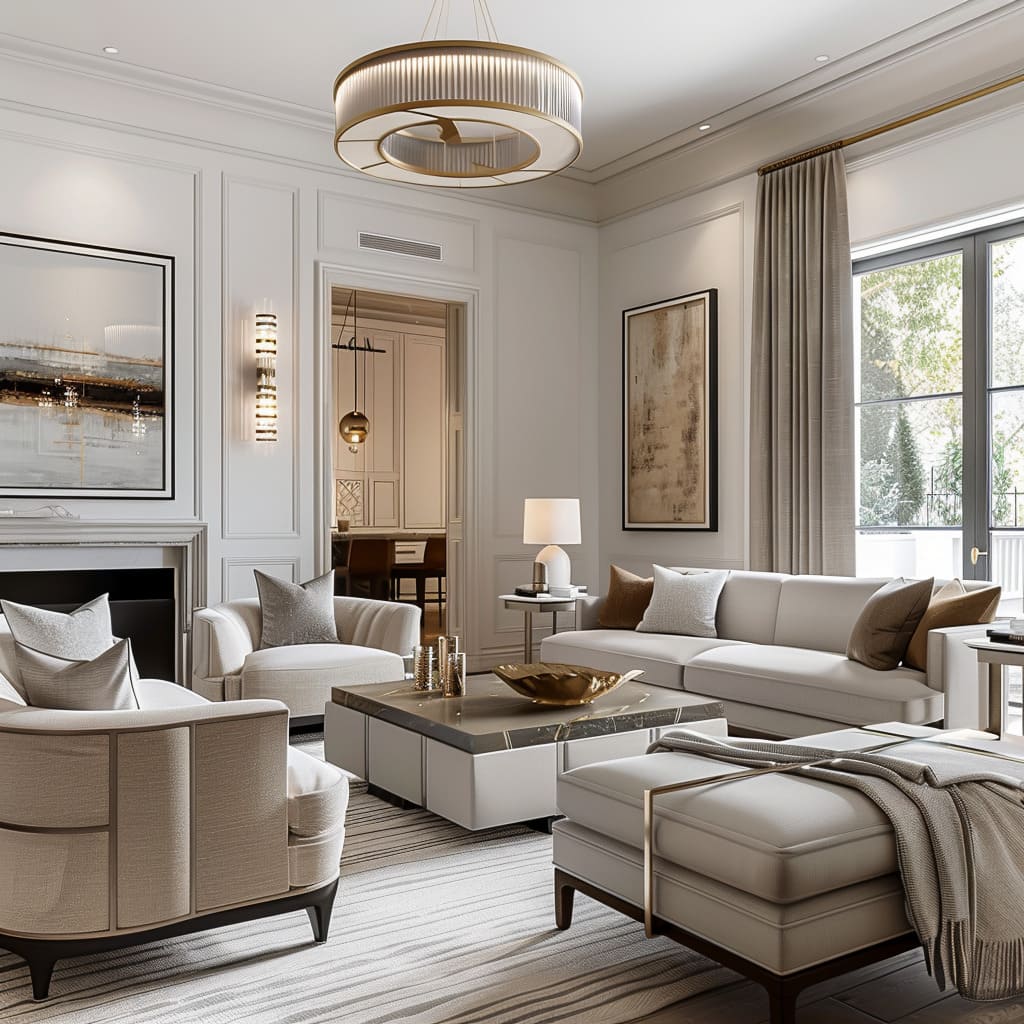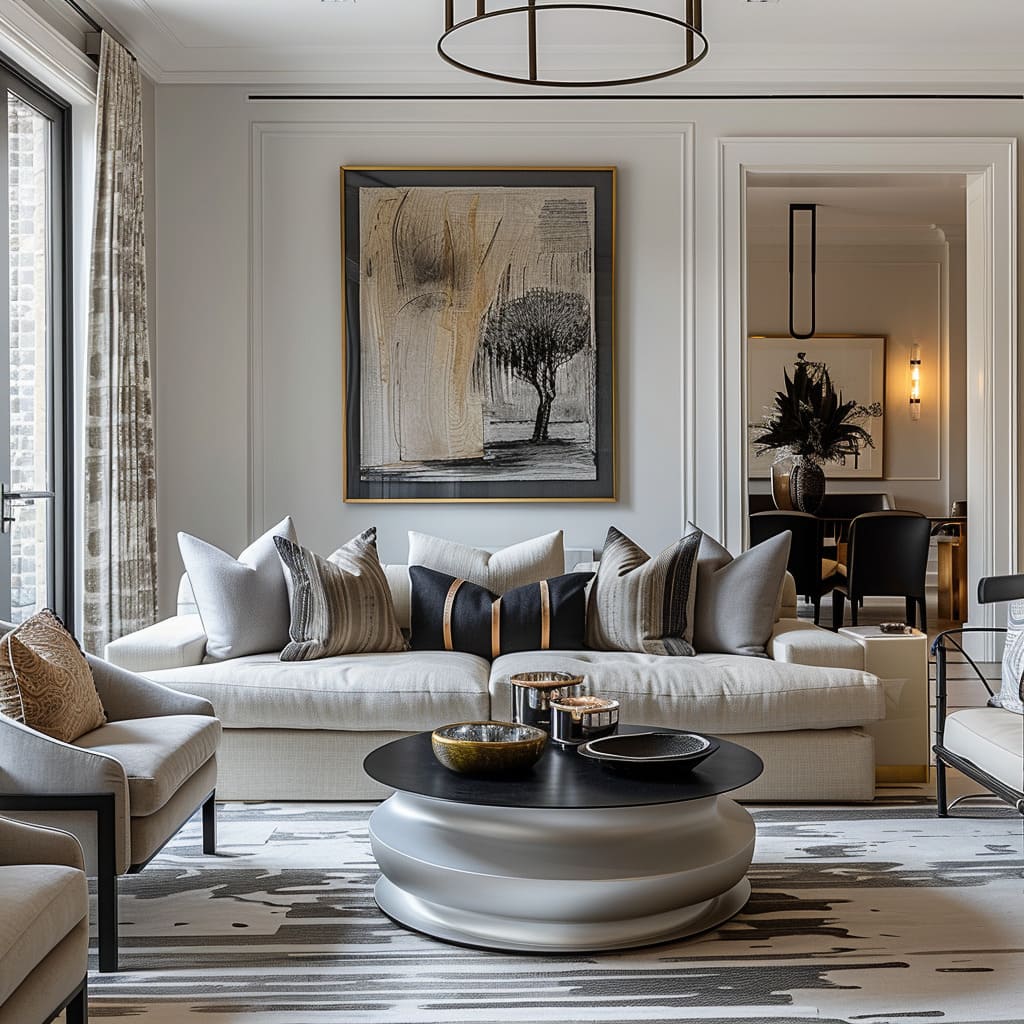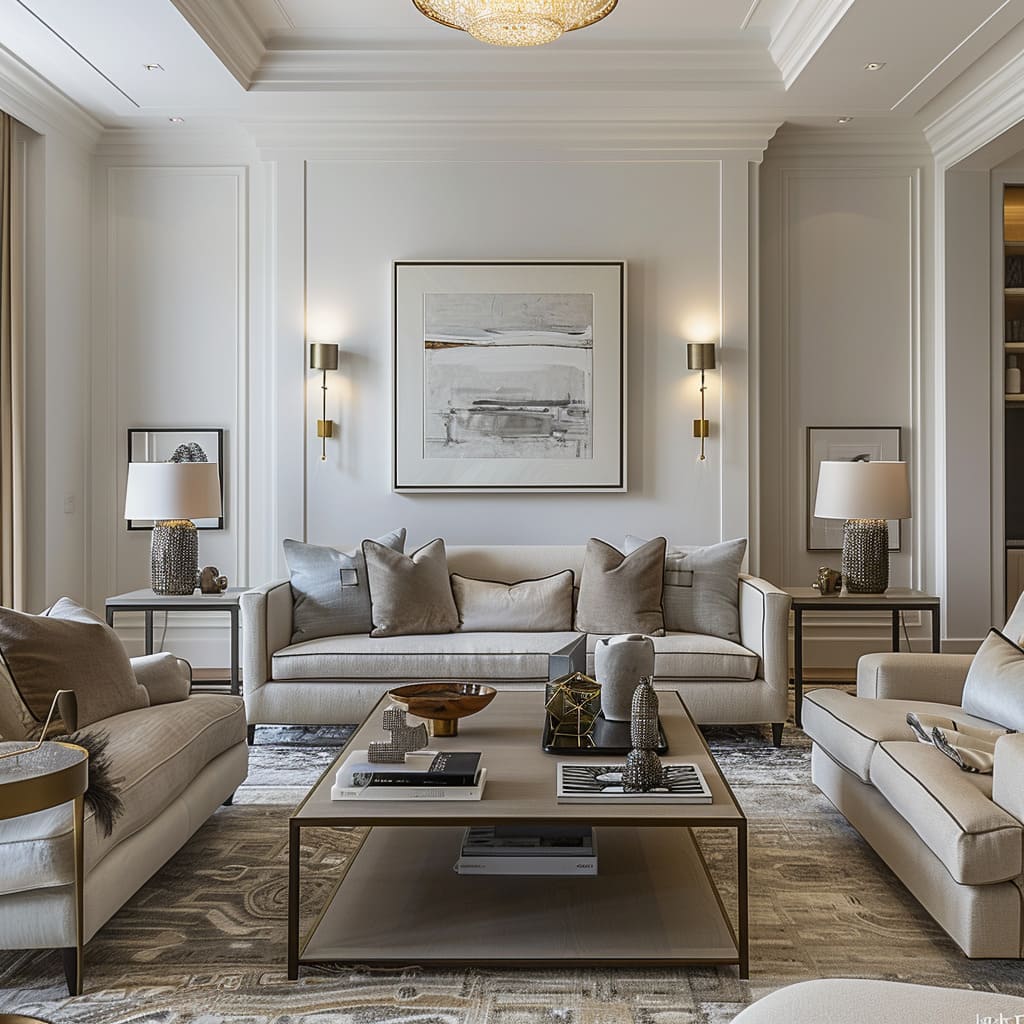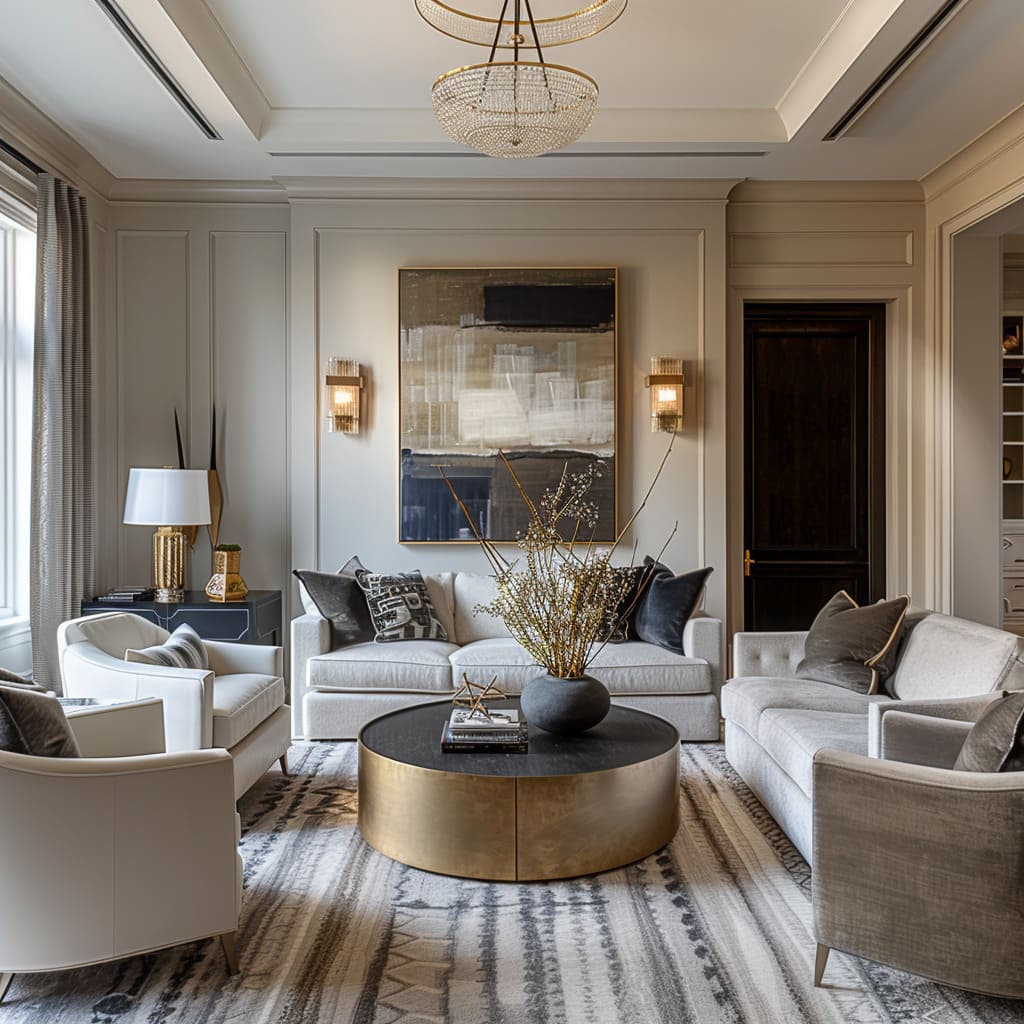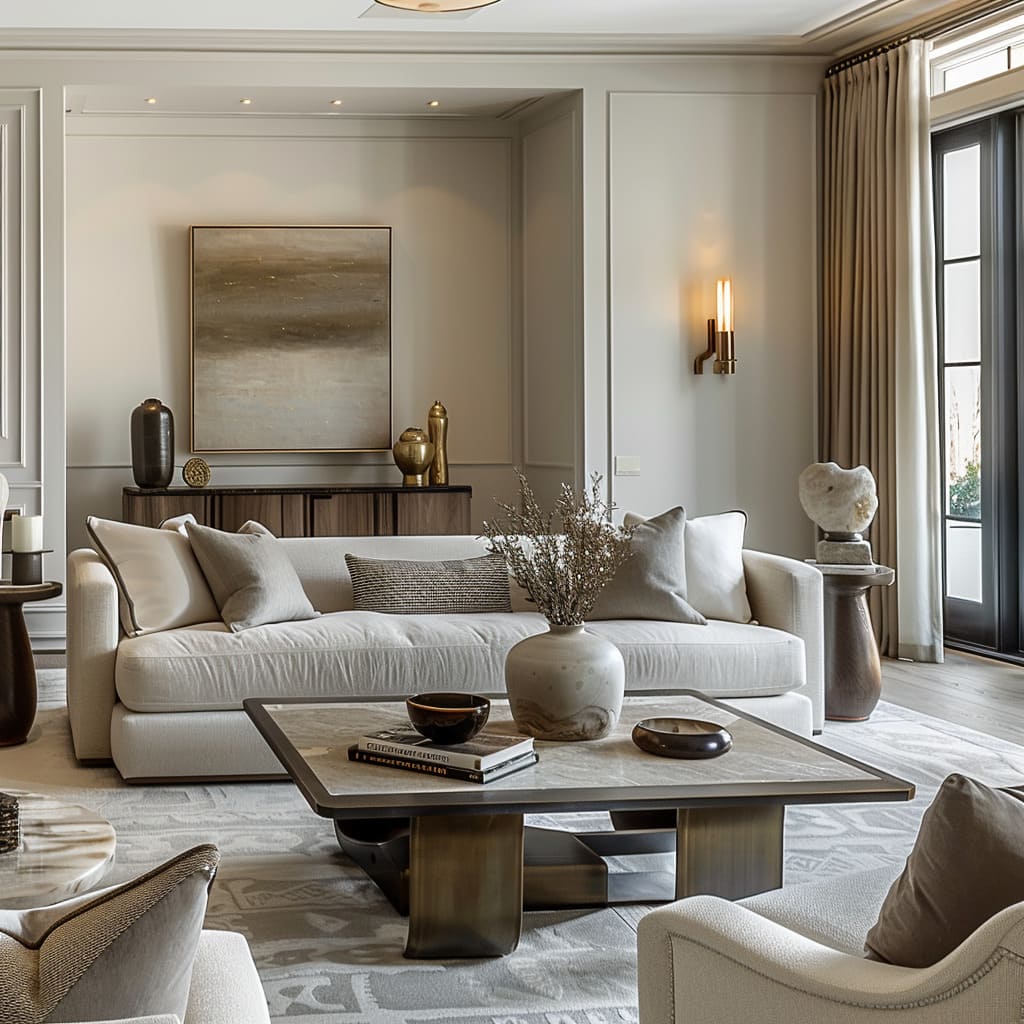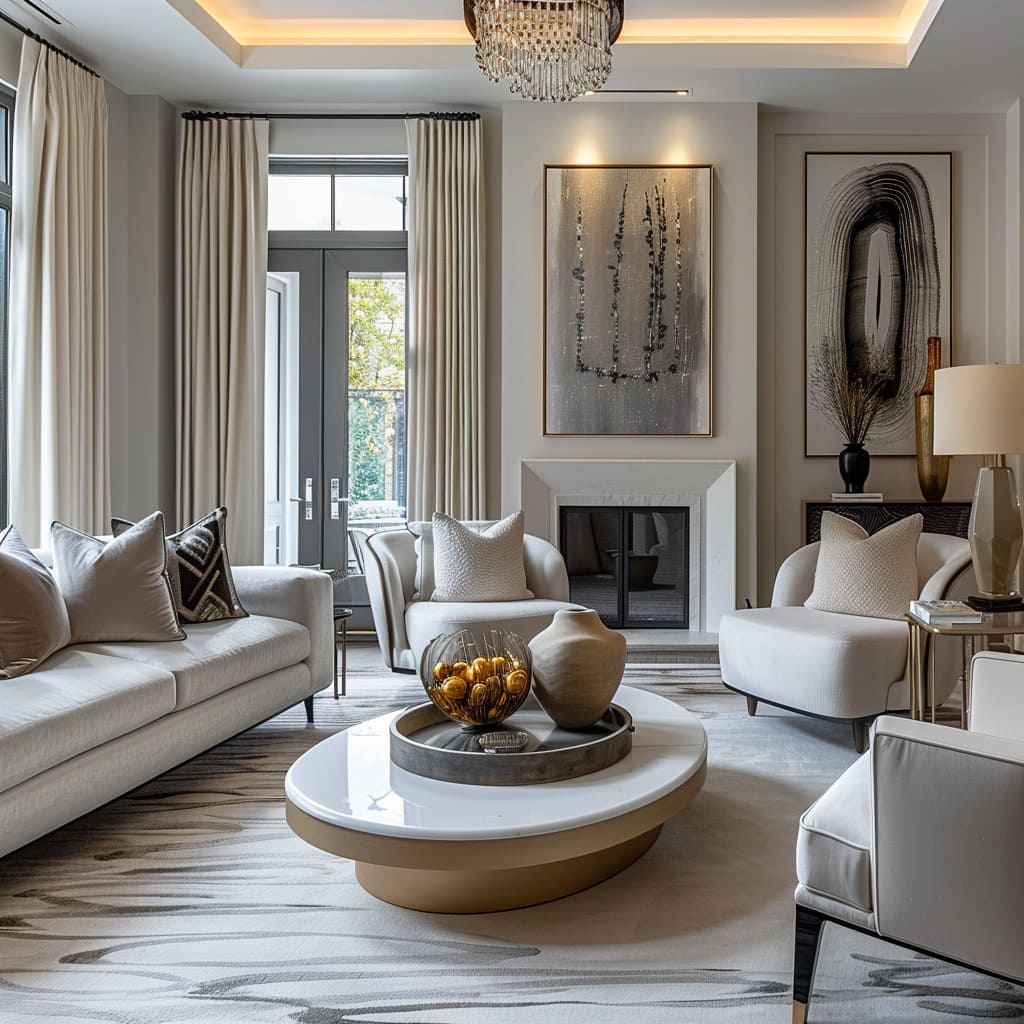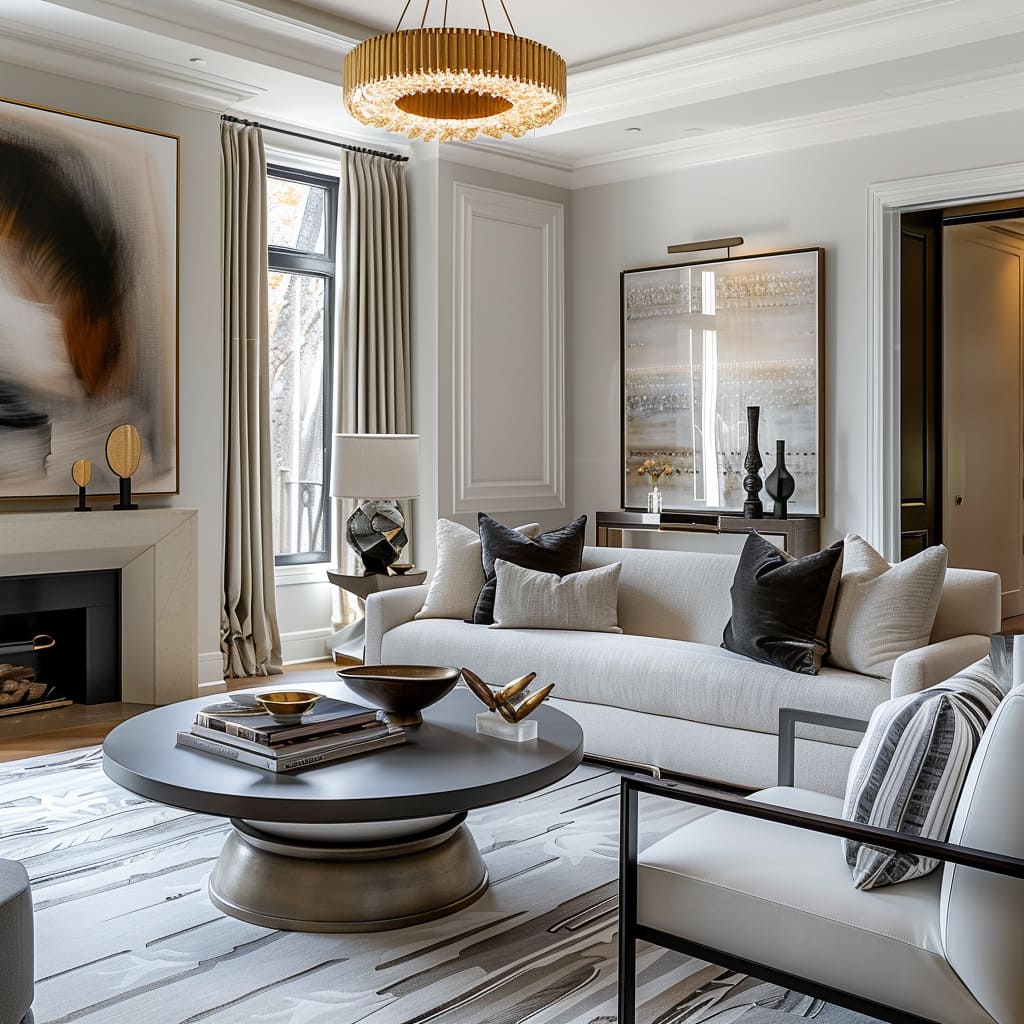In the intricate dance of interior design, every element plays a pivotal role in crafting spaces that resonate with elegance, functionality, and personal expression. This article delves into the myriad aspects of contemporary design, exploring how spatial configurations, color schemes, furniture selection, lighting, and functional components come together to create environments that are not only visually appealing but also deeply attuned to the rhythms of daily life.
From the infusion of natural light to the strategic placement of art and the integration of technology, we unravel the layers of design that transform a house into a home, offering insights into how each feature contributes to the overall harmony and dynamism of living spaces.
Color and Texture in Contemporary Design
Color and texture play pivotal roles in shaping the atmosphere and aesthetic of a space. This exploration delves into how neutral color palettes serve as a sophisticated foundation, accentuated by strategic pops of vibrant colors and a medley of textures and materials.
These elements work in concert to create living spaces that are not only visually appealing but also rich in sensory experiences.
Neutral Color Palette
The color scheme of the rooms relies heavily on neutral tones including beige, white, and various shades of gray. These choices establish a serene and sophisticated backdrop, allowing the architectural elements and furniture to stand out.
The neutral walls provide a canvas for adding depth and warmth through layered lighting and natural wood accents. We observe how these hues also contribute to a sense of continuity and coherence throughout the home, with the occasional textured wall adding subtle complexity to the otherwise smooth surfaces.
The calmness of the neutral palette serves as an understated elegance that is timeless and versatile.
Accent Colors
Amidst the neutrality, there’s a deliberate and judicious use of bold colors, such as navy blue, burnt orange, and teal. These accents are introduced through accessories like cushions, artwork, and decor items, providing dynamic pops of color that enliven the space.
These colors do not overwhelm but rather complement the neutral base, drawing the eye and adding personality to the rooms. These strategic bursts of color not only break the monotony but also help to create points of interest and can even influence the perceived geometry and proportions of the space.
Textural Contrast
Texture plays a crucial role in these living room designs, with a diverse array seen in throw pillows, upholstery, rugs, and decorative objects. The combination of smooth leather, plush fabrics, woven baskets, and glossy finishes adds a tactile dimension that invites touch and adds richness to the visual experience.
One can notice how these textural elements interact with light, with some absorbing and others reflecting, contributing to a dynamic interplay that keeps the eye moving around the room. The contrast between the textures also helps to differentiate between various seating arrangements and functional areas, adding depth and interest to the otherwise streamlined furniture pieces.
Mixed Materials
The interior designs skillfully blend a variety of materials to create a rich and diverse sensory experience. We see the use of smooth, polished metals in furniture legs and frames, which contrast with the organic warmth of wood in flooring and cabinetry.
Glass elements in tabletops and doors add a layer of transparency and reflectivity that enhances the sense of space. Even within a single piece of furniture, like a coffee table or a shelf, multiple materials are combined to create interesting visual and tactile contrasts.
This mix not only adds depth and character to the rooms but also allows for a play of textures and finishes that can be tailored to reflect the homeowner’s personal style and preferences.
Geometric Patterns
The use of geometric patterns adds a layer of complexity and contemporary flair to the living spaces. Rugs underfoot display bold, angular patterns or more subtle linear designs, which anchor the furniture and define the seating areas.
Pillows and other textiles feature a range of geometric motifs, from stark monochrome to vibrant hues, adding a tactile dimension and visual interest against the more subdued backdrop of the furniture. The patterns vary in scale, with some serving as understated accents and others as prominent statement pieces.
These patterns contribute to a dynamic yet harmonious interior that feels both ordered and inviting.
Solid and Striped Patterns
The decor includes a refined mix of solid colors and stripes that introduce variety without overwhelming the space with too much pattern. The solids serve as a base, grounding the design and providing a backdrop for more intricate elements.
The striped patterns, which appear on select textiles like area rugs and throw pillows, add a rhythmic contrast that enlivens the room. The stripes are carefully selected in terms of scale and color to complement rather than compete with the solid hues, maintaining a cohesive look that aligns with the overall modern and uncluttered theme of the spaces.
Distinctive Furniture and Decor
In the tapestry of contemporary transitional interior design, furniture and decor are not merely functional elements but pivotal components that define the character and ambiance of a space. This exploration delves into how each piece, from statement art to low-profile furniture, is meticulously chosen and placed to harmonize with the room’s aesthetic, serve practical purposes, and evoke emotional responses.
The following sections reveal the intricate dance between form and function, showcasing how the strategic selection and arrangement of furniture and decor contribute to the creation of living spaces that are both visually compelling and deeply resonant with the inhabitants’ lifestyles and preferences.
Statement Art Pieces
Each room features striking large-scale art pieces that immediately draw the eye and establish a focal point. These artworks vary from abstract paintings with bold brush strokes to modern graphic pieces that command attention.
They are thoughtfully selected to complement the room’s color scheme and inject personality into the space. The placement of these pieces is carefully considered to balance the room’s composition and often to inspire the choice of accent colors and textures throughout the space.
The art not only serves as a visual treat but also as a conversation starter, reflecting the homeowners’ tastes and interests.
Minimalist Decor
The living spaces exhibit a minimalist approach to decor, embodying the less is more philosophy. Furniture and accessories are curated with restraint to avoid clutter and to focus on quality and functionality.
Surfaces are kept mostly clear, with a few well-chosen decorative objects like vases or books that contribute to the room’s aesthetic without overwhelming it. This minimalist strategy emphasizes the beauty of the space itself – the architectural lines, the quality of the materials, and the interplay of light and shadow.
Storage is cleverly integrated and often concealed, ensuring that everyday items are out of sight but easily accessible. The result is an environment that feels unburdened and spacious, offering a tranquil setting that encourages relaxation and contemplation.
Clean Lines
The furniture and decor throughout these living spaces are characterized by clean, uncluttered lines that give each room a modern and sophisticated appearance. Couches and chairs with straight, crisp edges offer a contemporary look.
Tables, shelves, and other surfaces have smooth finishes and sharp, defined lines that contribute to a sleek, orderly feel. There is an absence of ornate details or superfluous decoration, allowing the focus to remain on the form and craftsmanship of each piece.
This emphasis on clean lines extends to the layout of the rooms themselves, with furniture arranged to maintain an open feel and a clear path for movement, reinforcing the minimalist and contemporary aesthetic.
Contemporary Furniture
The living areas are appointed with contemporary furniture that combines form with function. Modular sofas are a key feature, showcasing clean, geometric shapes that can be reconfigured to suit various needs and room layouts.
Minimalistic chairs complement the sofas, with slim profiles and modern materials that uphold the sleek design narrative. The furniture often incorporates innovative designs, such as floating shelves that serve dual functions or elegantly simple coffee tables that emphasize practicality without sacrificing style.
The choice of furniture in these spaces clearly mirrors a modern lifestyle, where flexibility and a streamlined aesthetic are paramount.
Reflective Surfaces
The design incorporates reflective surfaces to amplify light and enhance the overall sense of space. Mirrored accents are strategically placed to reflect both natural and artificial light, brightening the rooms and giving an impression of a larger area.
Metallic finishes on fixtures and fittings catch the light and add a touch of luxury, while glass elements in furniture and decor contribute to a feeling of openness. These reflective surfaces are balanced with matte textures to prevent visual overload, ensuring that the shimmering accents serve as subtle highlights rather than dominating features.
Plush Seating
The seating arrangements prioritize comfort without compromising on style. Oversized sofas and armchairs invite relaxation and offer ample space for family and guests to gather.
The plush upholstery in neutral tones beckons one to sit down and unwind, while also serving as a versatile foundation for accent pillows and throws. These seating options are often deep and cushioned, providing ergonomic support and promoting a casual, laid-back atmosphere.
The intention is to create an inviting environment that encourages spending time together, whether it’s for casual conversation or engaging in shared activities.
Low-Profile Furniture
The chosen furniture in these spaces is low-profile, characterized by pieces that sit close to the ground, thus enhancing the overall feeling of spaciousness. This can be seen in the couches and tables which maintain a low horizon line throughout the room, allowing the eye to travel freely over the space without interruption.
These low-slung items lend an air of modern sophistication and casual elegance. Their horizontal emphasis plays off nicely against the vertical sweep of the walls and tall windows, providing a balance that feels both grounded and airy.
The low-profile furniture also complements the clean lines and minimalist design elements elsewhere in the room, reinforcing the contemporary aesthetic.
Decorative Pillows
The living spaces are adorned with a collection of decorative pillows, which serve not only as comfort pieces but also as important style elements. These pillows vary in size, color, and pattern, allowing for a playful mix that can be altered with the seasons or as design trends shift.
The interior designs show how they introduce bursts of color that echo other accents in the room, such as artwork or accent furniture, thus creating a cohesive look. They also introduce an assortment of textures, from smooth silk to nubby linen, contributing to the tactile richness of the space.
Their placement is strategic, sometimes clustered for a lavish effect or arranged singly for a touch of elegance, always ensuring that the sofa or chair they adorn appears welcoming and thoughtfully styled.
Area Rugs
The area rugs are carefully selected to complement the larger design scheme, grounding furniture arrangements and adding a layer of comfort and warmth atop the wooden floors. They vary in design from neutral, subtle patterns that blend with the flooring to more vibrant designs that stand out and make a statement.
Rugs delineate specific zones within the larger room, such as a seating area or a reading nook, helping to organize the space visually without the need for physical partitions. The textures of these rugs range from plush and soft, which can soften the acoustics of the room, to flat-weaves which are more durable and easier to maintain, reflecting both aesthetic preferences and practical considerations.
Floating Shelves
Floating shelves add a sleek and modern element to the room, as they appear to emerge directly from the wall without visible brackets or supports. These shelves serve as both functional storage spaces and display areas for books, artwork, and personal treasures.
By maintaining a clean line and minimizing visual bulk, these shelves enhance the minimalist aesthetic of the room. The materials and finishes of the shelves often match the wall color or texture, which helps them blend into the background and give the impression that the items on display are almost suspended in mid-air.
This feature is particularly effective in maintaining the uncluttered look that is so essential to contemporary design, providing practical storage solutions without compromising the sleek, open feel of the space.
Sculptural Elements
Decorative items within these living spaces are chosen for their sculptural quality and their ability to complement the interior’s design story. These pieces range from organic forms that add a softness to the room, to more angular, geometric shapes that echo the clean lines of the furniture.
These sculptural elements are strategically positioned to serve as conversation starters or as points of visual interest that guide the viewer through the room. They are often made from materials such as metal, stone, or wood, and their varied textures and finishes add depth and a tactile dimension to the spaces.
The careful placement of these items ensures they are integral to the design rather than mere afterthoughts, each contributing to a cohesive narrative that speaks to the curated nature of contemporary living environments.
Crafting Atmosphere with Lighting
Lighting plays a pivotal role in defining the ambiance and mood of a space, blending functionality with aesthetic appeal to transform interiors into immersive environments. This section delves into the nuanced application of lighting within contemporary design, where every fixture is not just a source of light but a design element in its own right.
From the understated elegance of recessed lighting to the dramatic flair of designer fixtures, we explore how lighting is strategically employed to enhance the architectural beauty, highlight key features, and create adaptable atmospheres that shift with the rhythms of daily life. The interplay of light and shadow, intensity and subtlety, all contribute to the dynamic character of a space, making lighting an essential component in the art of interior design.
Recessed Lighting
In addition to the abundant natural light, the interiors are equipped with recessed lighting that offers a clean, streamlined look by fitting flush with the ceiling. These fixtures are strategically placed to accentuate architectural features, provide task lighting, and create ambiance with their soft, diffused glow.
The living rooms show how this lighting approach avoids the clutter of hanging fixtures, maintaining the rooms’ modern and uncluttered aesthetic. Dimmable options provide flexibility, allowing the intensity of the light to be adjusted to suit different moods and occasions, from bright and functional during the day to soft and intimate at night.
Ambient Lighting
Ambient lighting is key in creating an atmosphere that is both warm and functional. The designs showcase various lamps, from sleek floor lamps that arc over the space to tabletop designs that cast a soft glow, all contributing to the layered lighting scheme.
These lighting elements are carefully placed to highlight the room’s best features and provide illumination where it’s most needed without being intrusive. Dimmer switches are likely used to adjust lighting levels, allowing the ambiance of the room to transition smoothly from the bright focus of daytime to a more intimate evening setting.
The warm light contrasts with the cooler daylight, adding depth to the room as the day progresses.
Designer Light Fixtures
The designer light fixtures that serve as both sources of illumination and stand-alone works of art. These fixtures vary in design from sophisticated pendant lights that cascade from the ceiling to modernistic chandeliers that command attention in the center of the room.
Each fixture is chosen not just for the quality of light it provides but also for its ability to complement the room’s architecture and design elements. For example, a statement piece with a sculptural form can turn an otherwise simple room into a gallery-like space.
These light fixtures are strategically placed to highlight the high ceilings and add visual interest at varying levels, contributing to the layers of design that give the spaces their luxurious feel.
Natural Light and Structural Harmony in Transitional Design
Spatial design is a cornerstone of creating environments that resonate with comfort, elegance, and connectivity. This segment explores how contemporary interiors harness the power of natural light and architectural features to craft spaces that are not only aesthetically pleasing but also inherently connected to the natural world.
The interplay of light, structure, and openness is meticulously orchestrated to enhance the spatial experience, drawing the outside in and elevating the sense of freedom within the living areas. From the strategic placement of windows and doors to the thoughtful incorporation of high ceilings, we delve into the principles that guide the creation of spaces that celebrate transparency, light, and the seamless integration of indoor and outdoor living.
Natural Light
The living spaces are bathed in natural light, streaming in through generous windows and sliding glass doors that effectively dissolve the barriers between indoors and out. This not only infuses the rooms with a welcoming brightness during the day but also provides a visual connection to the outside environment, extending the living space beyond its physical confines.
We can see how the natural light highlights the textures and colors within the rooms, enhancing the materials’ natural hues and contributing to the overall ambiance. Skylights and strategically positioned windows ensure even the innermost areas receive a share of daylight, promoting energy efficiency and well-being by reducing the need for artificial lighting during the day.
Indoor-Outdoor Connection
The living spaces extend seamlessly to the outdoors through the use of large glass doors and expansive windows, effectively erasing the boundary between inside and outside. These transparent portals not only flood the interiors with natural light but also offer unobstructed views of the surrounding landscape, gardens, or cityscapes, bringing a piece of the outside world into the living space.
The doors themselves are often designed to slide or fold away, truly opening the home to the outdoors and facilitating a lifestyle that can flow effortlessly between the two. This connection to the outdoors is a key element of contemporary living, providing a sense of freedom and harmony with the environment.
High Ceilings
The living spaces are defined by their high ceilings, which enhance the grandeur and spaciousness of each room. These lofty ceilings not only create an airy, open atmosphere but also allow for large windows that bring in ample natural light.
The vertical expanse provides a dramatic backdrop for light fixtures and tall art pieces, which draw the eye upward and emphasize the room’s volume. The design takes advantage of this vertical space through the use of tall indoor plants or high-reaching decor that fills the area without cluttering it.
The sense of openness afforded by these high ceilings is further accentuated by the restrained use of decor at the upper levels, ensuring that the space remains open and unobstructed, reinforcing the luxurious and expansive feel of the contemporary design.
The Subtle Art of Practical Design Elements
Functionality marries aesthetics to create spaces that are both beautiful and practical. This section delves into the crucial yet often understated elements that contribute to the utility and harmony of living spaces.
From the strategic use of window treatments that balance light and privacy to the integration of technology that enhances convenience without compromising style, each component is thoughtfully considered.
We explore how functional accessories, symmetrical arrangements, natural materials, and innovative storage solutions not only serve their intended purposes but also contribute to the overall design narrative, ensuring that every aspect of the room is both useful and visually appealing. In this fusion of form and function, we find the essence of modern living – spaces designed to support, inspire, and resonate with the daily lives of their inhabitants.
Subtle Blinds or Drapes
Window treatments in these interiors are selected for both function and design. Blinds and drapes appear as an understated element of the room’s decor, with colors and textures that blend harmoniously with the overall palette.
They serve to soften the incoming light and provide privacy when needed without making a heavy visual impact. The window treatments can be sleek, with simple lines that maintain the clean, modern look of the room, or they can add a layer of softness and texture if made from more luxurious, flowing fabrics.
Motorized options add a level of convenience and technological integration
Functional Accessories
In these living spaces, accessories are chosen not only for their decorative appeal but also for their functionality. Books neatly arranged on coffee tables or in built-in shelving invite reading and denote a space of intellect and relaxation.
Decorative bowls and vases are carefully selected to complement the room’s color scheme and can be used for serving or displaying items. Even the selection of tabletop sculptures and other ornamental pieces appears thoughtfully considered, often doubling as conversation pieces while maintaining the minimalist theme.
In these interiors, every accessory has a place and a purpose, contributing to the uncluttered, sophisticated atmosphere that defines the space.
Symmetry
The symmetrical arrangement of furniture and decor is evident, giving the spaces a sense of balance and poise. Sofas are often flanked by matching end tables and lamps, creating a mirror image that pleases the eye.
Artwork is centered above consoles or between windows, anchoring the room’s design with a sense of order. Even the positioning of pillows and decorative items often reflects a balanced approach, adding to the feeling of calmness and control.
This symmetry in design does not just add aesthetic value but also provides a navigational ease within the space, guiding movement and interaction in the room.
Wood Elements
Wooden elements infuse the rooms with warmth and a connection to nature, as evidenced by the wide plank flooring and wooden furniture pieces. The wood tones range from light, natural finishes that enhance the brightness of the space, to darker hues that provide contrast and depth.
These wood elements are not limited to flooring; they extend to other aspects of the room, such as paneling, beams, and furniture, creating a cohesive and inviting environment. The texture and grain of the wood bring an organic feel to the modern space, softening the clean lines of the furniture and complementing the overall neutral palette.
Integrated Technology
Technology is seamlessly integrated into the living spaces, blending in with the decor to enhance the functionality without disrupting the aesthetic flow. The flat-screen televisions fit snugly against walls or within custom cabinetry, almost disappearing when not in use.
Sound systems are likely built into the ceilings or walls, providing high-quality audio that fills the space without the clutter of visible speakers. The choice of sleek, modern devices ensures that the technology complements the contemporary furnishings and design of the room, allowing for a living space that is both technologically advanced and stylish.
Unobtrusive Storage
In these thoughtfully designed rooms, storage is integrated into the very fabric of the space, keeping clutter out of sight and contributing to the sleek, minimalist look. The interiors highlight built-in shelving that blends into the walls, cabinets with push-to-open mechanisms that forego handles for a cleaner look, and furniture with hidden drawers and compartments.
These storage solutions maintain the room’s tidy appearance and organizational efficiency. For example, a built-in media console not only houses entertainment equipment but also conceals wires and cables, while an alcove shelf displays decorative items without impeding the room’s flow.
The exploration of interior design elements in this article underscores the profound impact that thoughtful design can have on our living environments. By harmonizing spatial layouts, color palettes, lighting, and functional features, contemporary design transcends mere aesthetics to foster spaces that inspire, comfort, and adapt to the evolving needs of their inhabitants.
Whether through the strategic use of light to sculpt the ambiance of a room, the careful selection of furniture to balance form and function, or the integration of natural elements to create a sense of connection and tranquility, every detail contributes to the creation of spaces that are not just physically inhabitable but also emotionally resonant. In this synthesis of form, function, and feeling, interior design emerges as a powerful tool for enhancing the quality of our daily lives, offering endless possibilities for personal expression and environmental harmony.

